Better Than Takeout Chinese BBQ Char Siu Fried Rice
If you are reading this post today, I am guessing you must be curious to learn how to recreate this classic Chinese restaurant staple, “Char Siu Fried Rice 叉燒炒飯” at home.
Well, guess what? It’s a breeze, and I promise, no sweat involved. Once you master the fundamentals, you can call your shot and jazz it up with your spin – by adding Char Siu (Chinese BBQ Pork), beef, chicken, tofu, shrimp, or make it vegetarian friendly, or add all of the above ingredients – you name it, it’s all in your hands.
The big question is, “How can I outshine the takeout version?” Fear not, my friend. I’m here to be your kitchen sidekick, guiding you through every step and spilling my tried-and-true secret in today’s post.
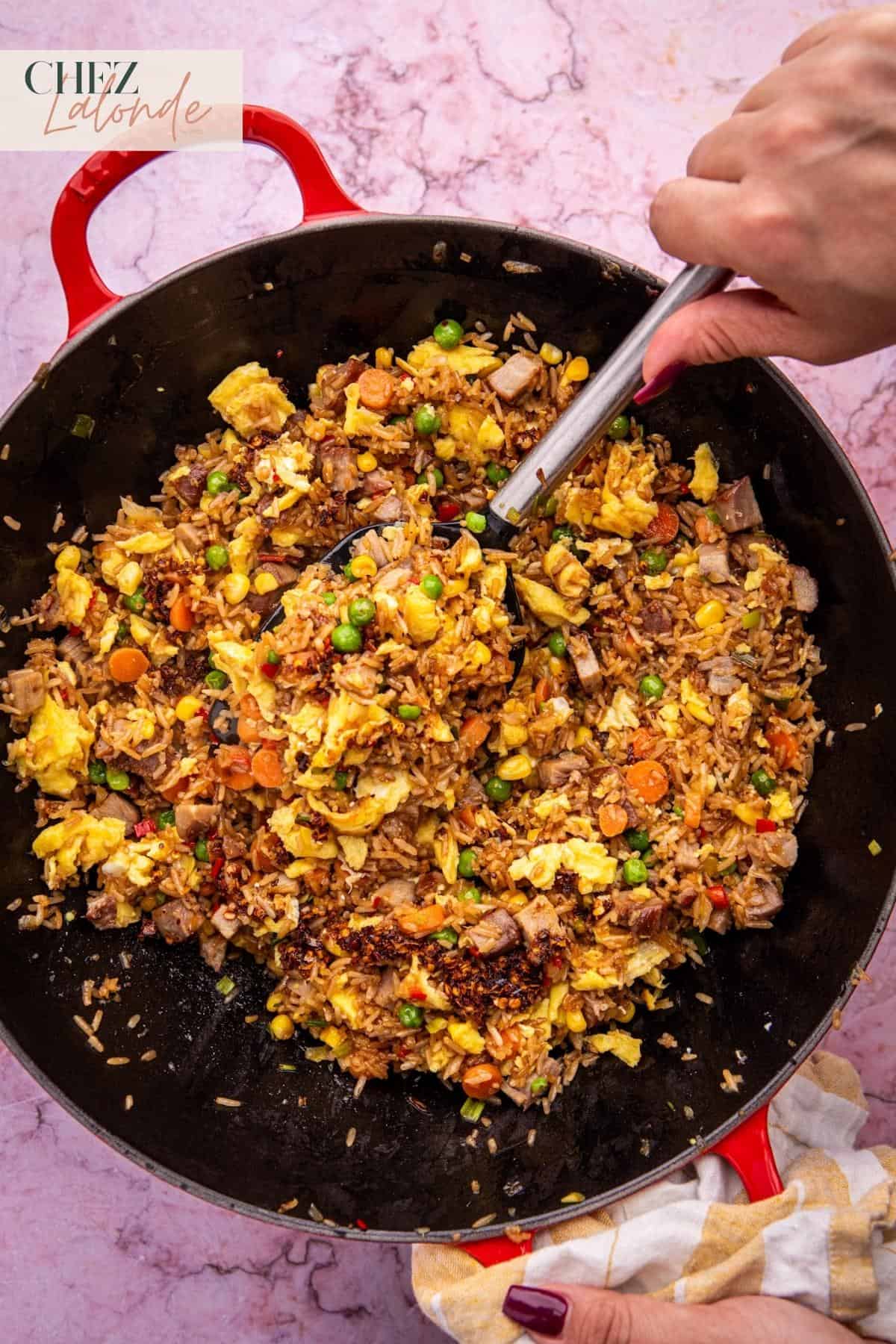
Disclaimer Notice: This website contains affiliate links. If you make a purchase through these links, I may earn a commission at no extra cost to you. I only endorse products or services I believe will be valuable to my readers. I appreciate your support.
For over a decade, Char Siu fried rice has been my trusty go-to – a savior on those time-crunched, dinner inspiration is MIA, with a fridge full of mismatched ingredients. Have you ever found yourself with a smidgen of leftovers, only enough to feed one or two people, yet, you need to feed a hungry pack of four or more?
Enter the fried rice hero. It’s a breeze to make, and the recipe is incredibly adaptable and bursting with flavors that can revive even the most dull, dried-out, day-old ingredients. If you tried my Sous Vide Char Siu recipe and have some leftovers, don’t waste such tasty leftover Chinese BBQ Pork; turn it into this mouthwatering Char Siu Fried rice dish to enjoy with your loved ones.
Today, I’m letting you know my secret recipe for whipping Restaurant worthy Chinese fried rice that might allow you to say goodbye to your favorite local Chinese restaurant.
Feeling excited? Fantastic!
Let’s dive into today’s post and make some “Better than take out” Chinese BBQ Char Siu Fried rice at home.
Let’s go! 🍚🥢
Recipe Snapshot
EASE: This recipe is easy to follow, with straightforward steps and customizable ingredients.
PROS: You can enjoy a quick and convenient meal, savor an explosion of flavors, and give new life to leftover ingredients.
CONS: Stir-frying requires high temperatures, so keep an eye on your pan to avoid burning.
WOULD I MAKE THIS AGAIN? Absolutely! I have been making this dish for decades.
Why will you enjoy making this fried rice recipe at home?
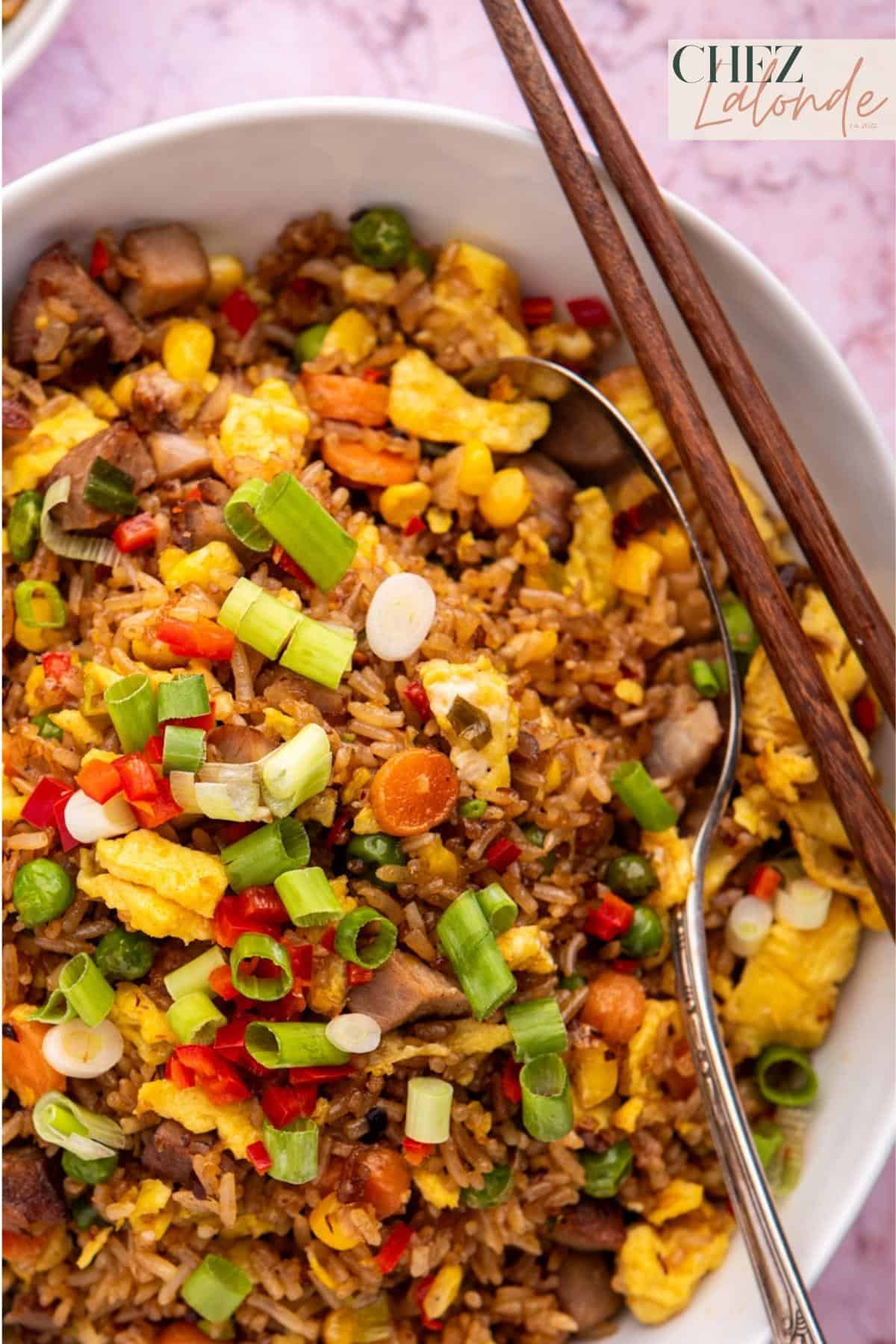
Reduced food waste:
This fried rice recipe provides a brilliant solution when you feel uninspired in meal planning. The recipe’s flexibility allows you to turn unwanted leftovers into mouthwatering masterpieces effortlessly.
Save you time and money:
Get ready to fall in love with this recipe’s sheer simplicity and speed. In under 20 minutes, you can whip up a restaurant-worthy meal effortlessly, sparing your time and money from the hassle of dining out.
Unleashed your culinary creativity:
Unlike baking, which demands strict adherence to the recipe, crafting this main dish grants you the freedom to customize it according to your tastes and dietary requirements, guaranteeing a gratifying personalized dining experience. Remember, Char Siu fried rice is just one option within the vast realm of fried rice possibilities.
What is a Char Siu Fried Rice 叉燒炒飯?

Char Siu Fried Rice is a delightful Chinese dish that marries the rich flavors of Char Siu (Chinese BBQ Pork) with day-old rice. What makes Char Siu Fried Rice truly captivating is its customizable nature – you can personalize it with various proteins, from Chinese BBQ pork to succulent shredded chicken and seafood. This dish is a perfect traditional meal, making it a versatile and enticing addition to your culinary repertoire.
How did the Chinese come up with different fried rice recipes?
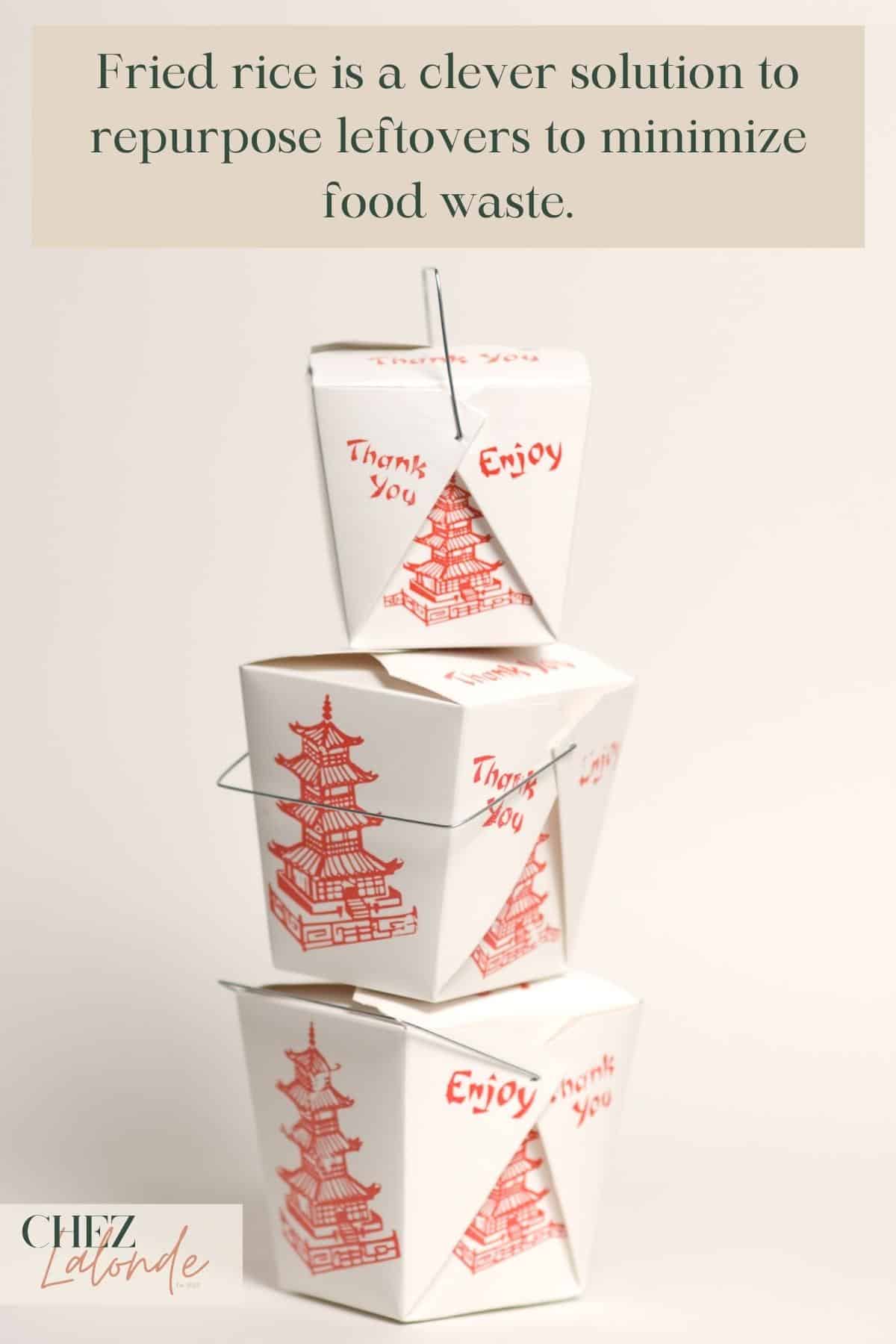
I am unsure about when this dish was invented. However, when I was little, my Grandma told me that poor people created fried rice as a cleaver solution to repurpose leftover rice and various ingredients to minimize food waste.
In traditional Chinese households, frugality was highly valued, and making the most of every ingredient was essential. Stir-frying leftover rice with soy sauce, eggs, and meat, can help revitalize the texture and flavors of unappetizing day-old food.
Fast forward to today, fried rice’s popularity has spread across the globe and has become one of the classic go-to dishes in Chinese restaurants. People turn to fried rice because of its convenience, versatility, and affordability. This recipe is the most intelligent way to use up unwanted day-old ingredients.
What type of rice works best for fried rice?

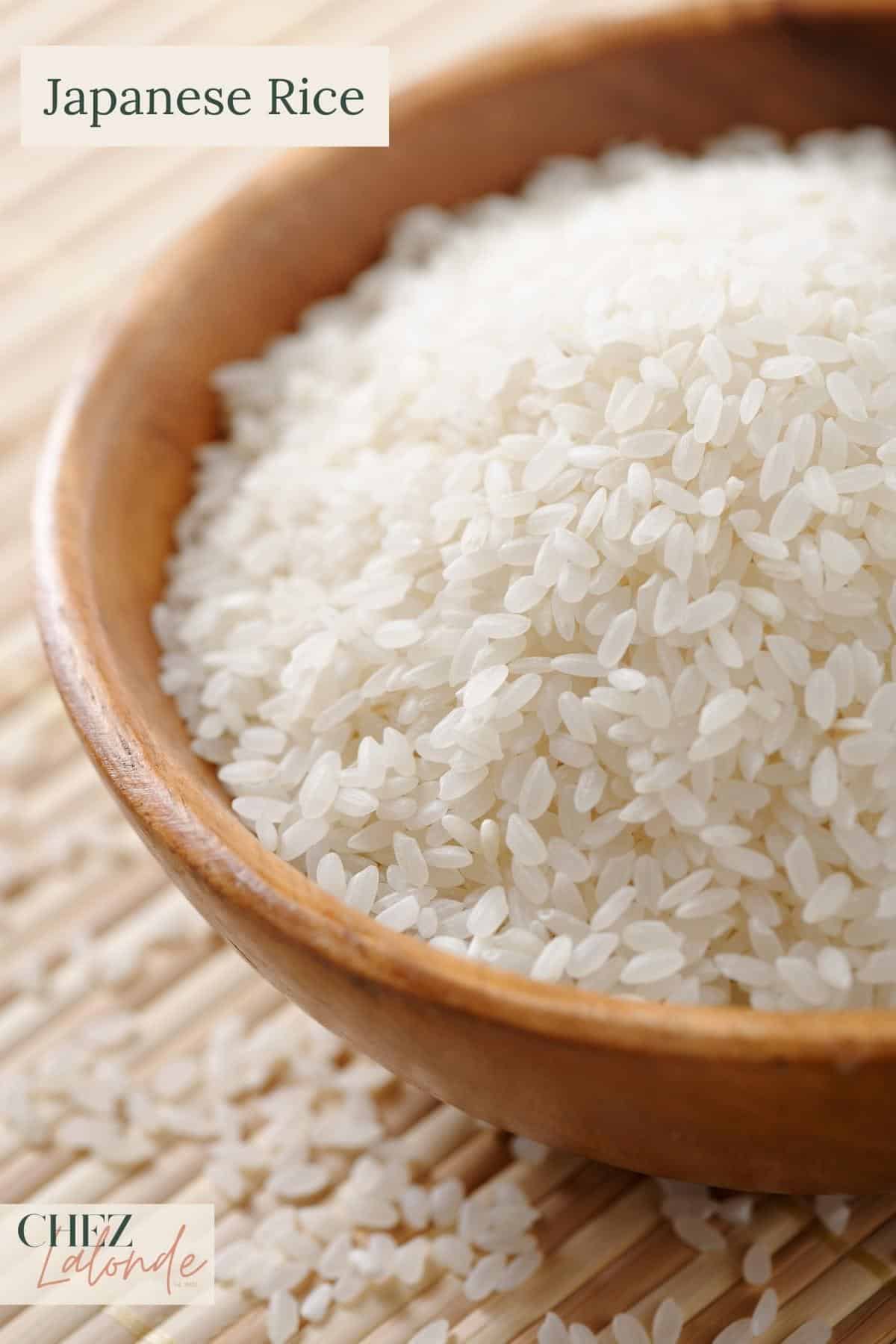
The best type of rice to use to make fried rice is, hands down, Thai Jasmine rice. Their grains stay separate after cooking, allowing that classic fried rice texture to shine and absorb the flavors perfectly. Just a friendly tip: Japanese sushi rice might not be your best bet, as its stickier consistency doesn’t quite match this fried rice recipe.
What gives Chinese fried rice its renowned flavor and color?

The fried rice’s gorgeous hue comes from a dark and regular soy sauce blend. Back in the day, this clever addition was used to mask the taste of leftovers. But fried rice has come a long way since then. Nowadays, it’s not just a budget-friendly option; upscale Chinese restaurants are jazzing it up with premium ingredients such as dried scallops and truffles. However, soy sauce remains the main ingredient in the recipe, bringing an extra punch of umami.
What is the difference between Chinese fried rice and Lo Mein?
While Chinese fried rice and Lo Mein involve stir-frying ingredients, the key difference lies in the base component – rice for fried rice and noodles for Lo Mein – which shapes their textures and overall taste.
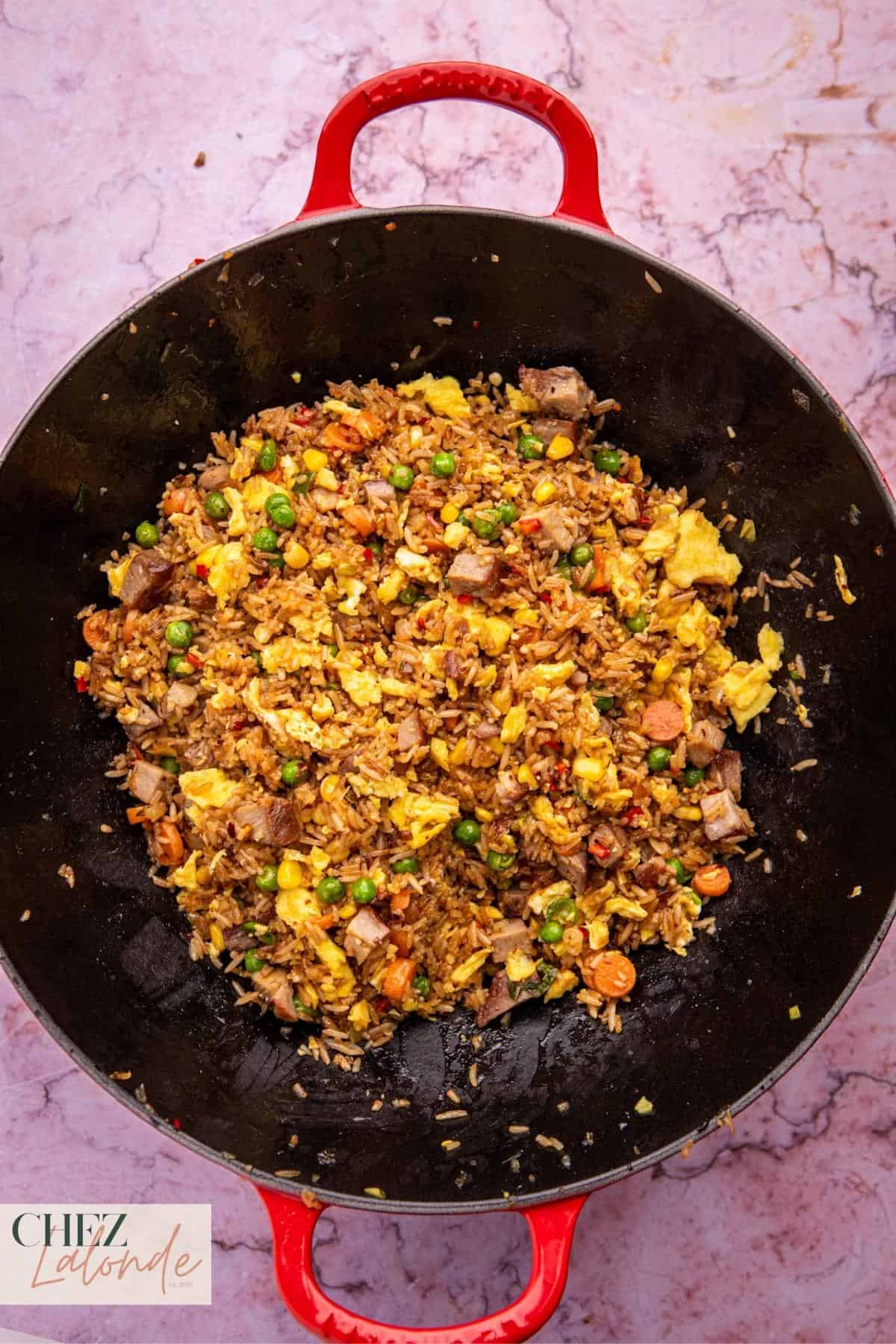
Chinese Fried Rice:
- Rice Base: Fried rice is made primarily with leftover cooked rice that’s stir-fried with various ingredients.
- Texture: The rice grains are distinct and separate, with a slightly chewy texture.
- Ingredients: It typically includes a protein like shrimp, chicken, or pork, along with vegetables, eggs, and soy sauce.
- Cooking Method: Ingredients are stir-fried in a wok or pan, resulting in a flavorful and slightly crispy dish.
- Variety: There are various styles of fried rice, like Yangzhou fried rice or pineapple fried rice, each with unique ingredients.

Check out this Delicious Shrimp Lo Mein recipe from my favorite blogger Danielle at Went Here 8 This.
Chinese Lo Mein:
(“Lo” means mixing, and “Mein” means noodles in Chinese)
- Noodle Base: Lo Mein features soft wheat noodles as the main component.
- Texture: The noodles are soft, smooth, and slightly slippery.
- Ingredients: It often contains a mix of vegetables, protein (chicken, beef, or shrimp), and a savory sauce.
- Cooking Method: The ingredients, including pre-cooked noodles, are stir-fried in a wok, creating a saucy and flavorful noodle dish.
- Variety: Lo Mein can also have variations, like vegetable lo mein or seafood lo mein, offering a range of flavors and ingredients.
Ingredients that you’ll need to make this recipe:
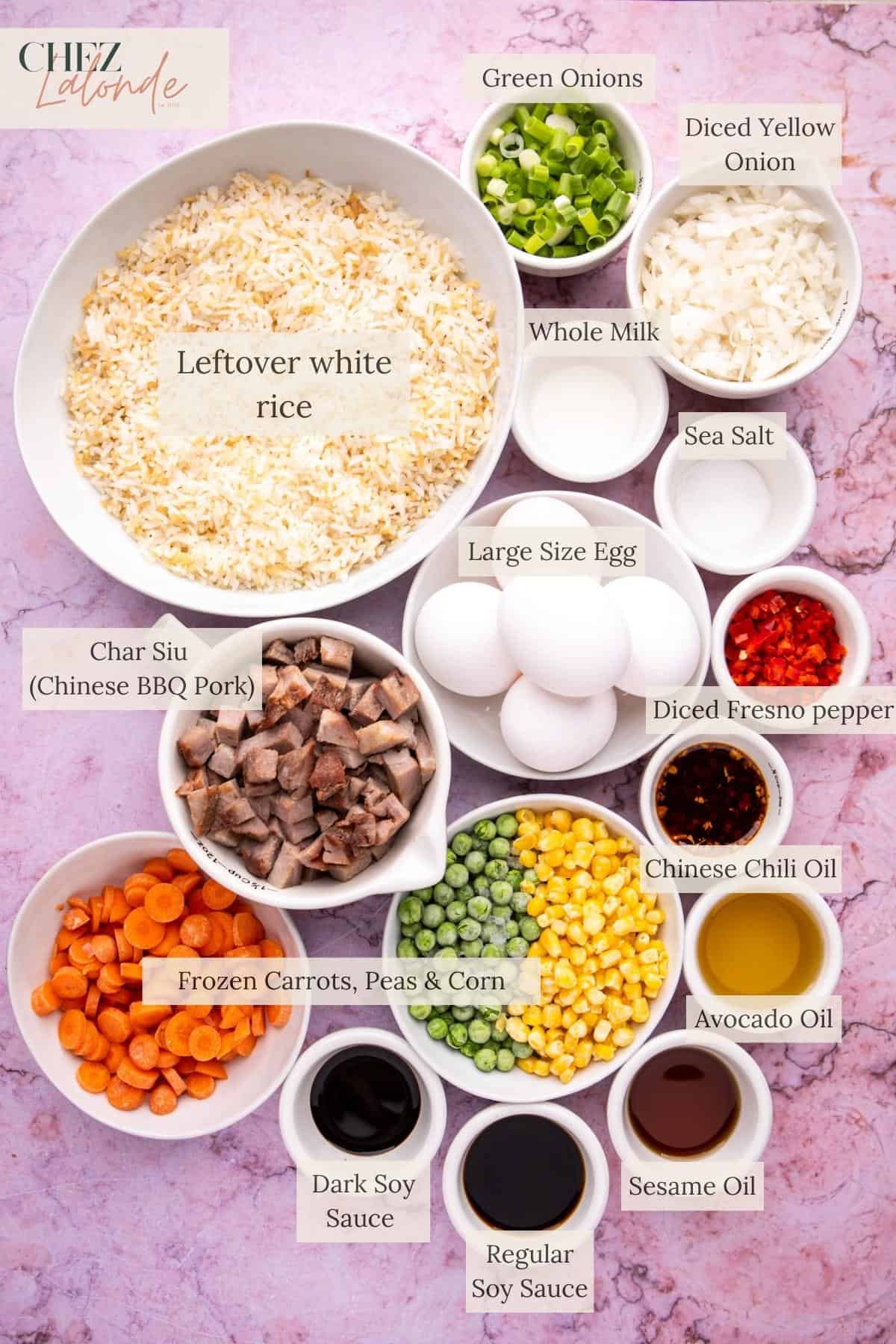
- Leftover cooked Jasmine rice: Using day-old rice ensures a drier texture, preventing clumping and resulting in that sought-after fried rice consistency.
- Char Siu (Can be homemade or store-bought): Adding leftover Char Siu pork infuses the dish with rich, smoky flavors, creating a star ingredient that takes your fried rice to a new level.
- Eggs: Add a layer of richness synonymous with classic fried rice.
- Sea Salt: To flavor the eggs
- Whole milk: We are adding this to the eggs only; it offers a silky texture and fluffiness. Make it not dry out when scrambling.
- Frozen mixed vegetables: Bring a burst of color and a touch of sweetness, contributing a balanced visual appeal and taste.
- Mid-size yellow onion: imparts a savory foundation and subtle sweetness that forms the base of the dish.
- Green onions: Add freshness, a mild bite, and a pop of color, elevating taste and presentation.
- Dark soy sauce: Ends a deep, rich color and intensified umami, creating a robust flavor profile.
- Regular soy sauce: dds saltiness and enhances the overall savory notes, contributing to a well-rounded taste.
- Sesame oil: offers a distinctive aroma and nuanced flavor that enriches the dish with a nutty essence.
- Avocado or Vegetable oil: ensures even cooking and prevents ingredients from sticking. It also gives an appetizing gloss to the final look of the dish.
- Chinese chili oil: Adds a kick of heat and is perfect for those who crave a touch of spiciness.
- Diced Fresno chili pepper: brings vibrant heat and a slight fruity note, elevating the overall flavor profile for those who enjoy a bit of spice.

Don’t know how to use these Asian sauces & condiments?
Check Out My Chinese Pantry Essential Guide To Learn More

Recipe Substitutions and Variations:
Remember, the possibilities are endless – let your culinary creativity run wild and enjoy crafting unique variations of your favorite Char Siu Fried Rice recipe! Here are just a few ideas that you can take a look at:
- Seafood delight: Swap Char Siu for succulent shrimp or scallops to create a seafood twist on this classic dish.
- Vegetarian Bliss: Dislike meat? No problem! Experiment with bell peppers, zucchini, broccoli florets, or snap peas for a vibrant mix of vegetables. What about adding tofu cubes to increase protein intake and level the vegetarian version? All up to your preference.
- Spice It Up: I love incorporating Chinese chili oil for a numbing, spicy, robust flavor.
- Enhance Southeast Asian flavor: Make Thai-style fried rice by stirring in chopped fresh basil leaves for a refreshing herbal aroma.
- Curry Fusion: Add a touch of curry powder for an exotic twist, transforming your fried rice into a fragrant curry delight.
How to make this Char Siu fried rice recipe?
Step One: Prepare your ingredients and sauces:
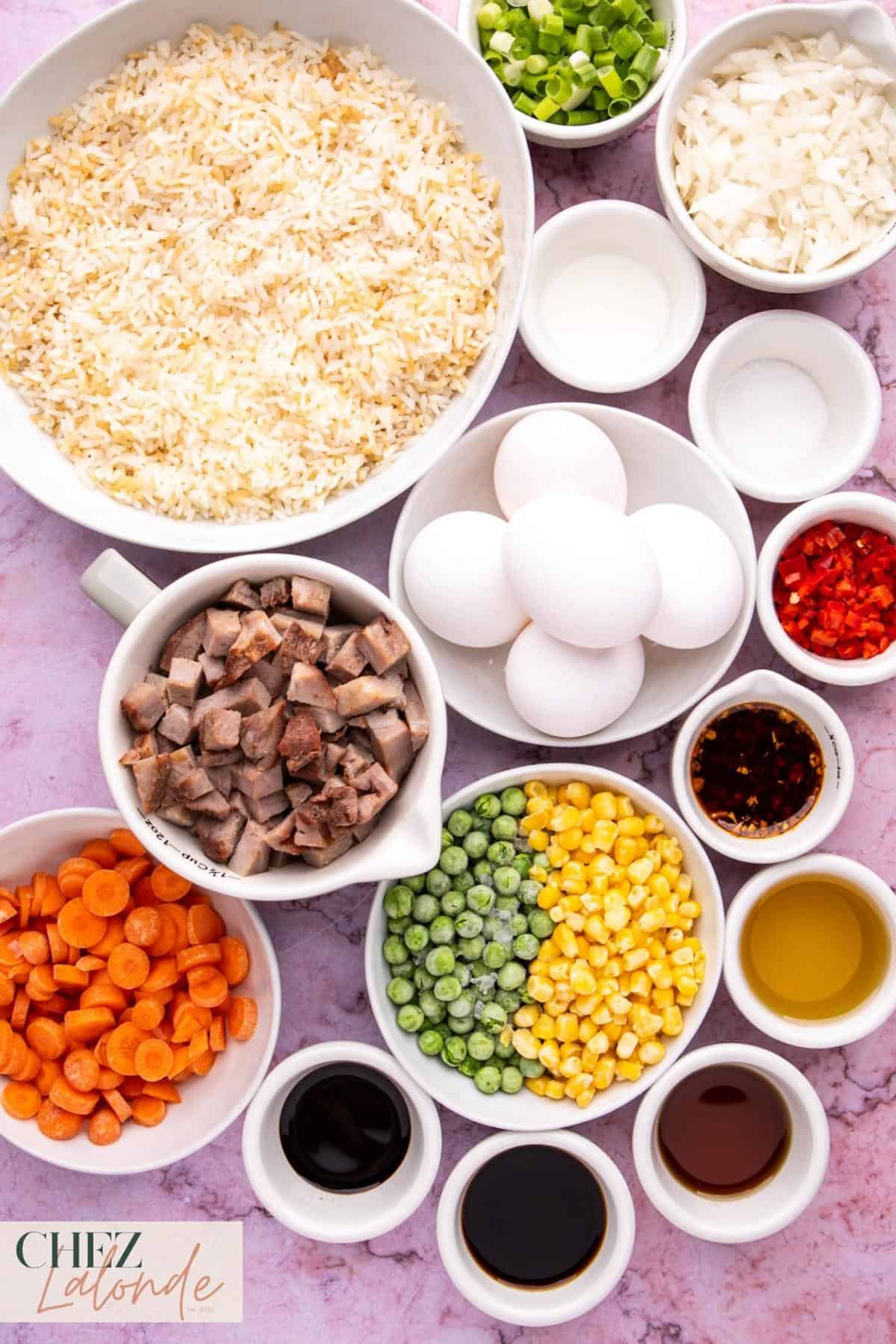
Prep the rice a day early if you can. For same-day cooking, use less water to avoid soggy rice. Also, cut ingredients into small pieces and measure sauces beforehand. Speed matters—this recipe is all about quickness and readiness.
Step two: Prepare and scramble the eggs:
Crack five eggs into a small bowl, then add 1 tablespoon of milk and ½ teaspoon sea salt. Whisk the mixture. Heat a small frying pan over medium-low heat, and when warm, lightly spray with cooking oil. Scramble the eggs until they’re cooked. Once done, take them out of the pan and set aside.
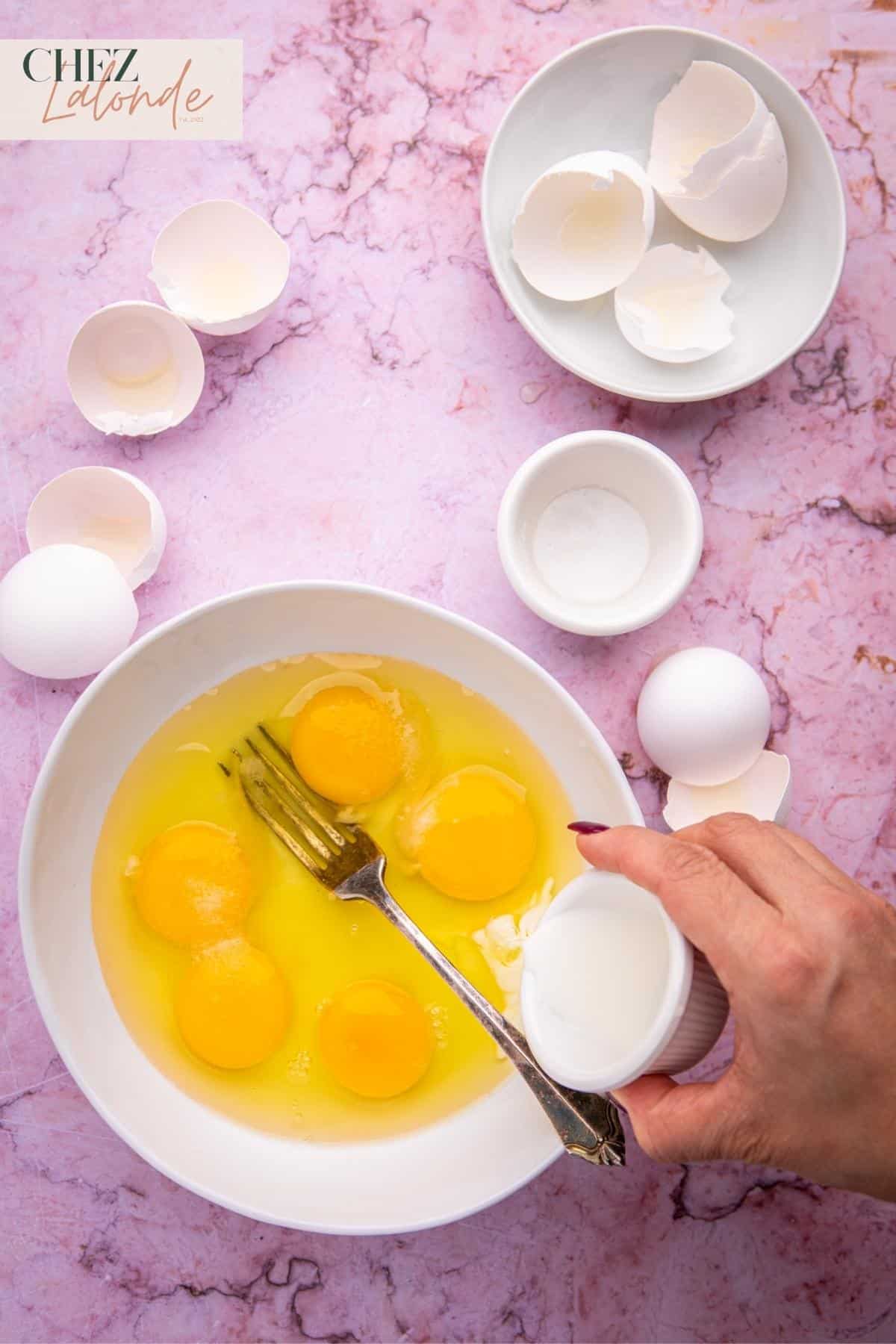

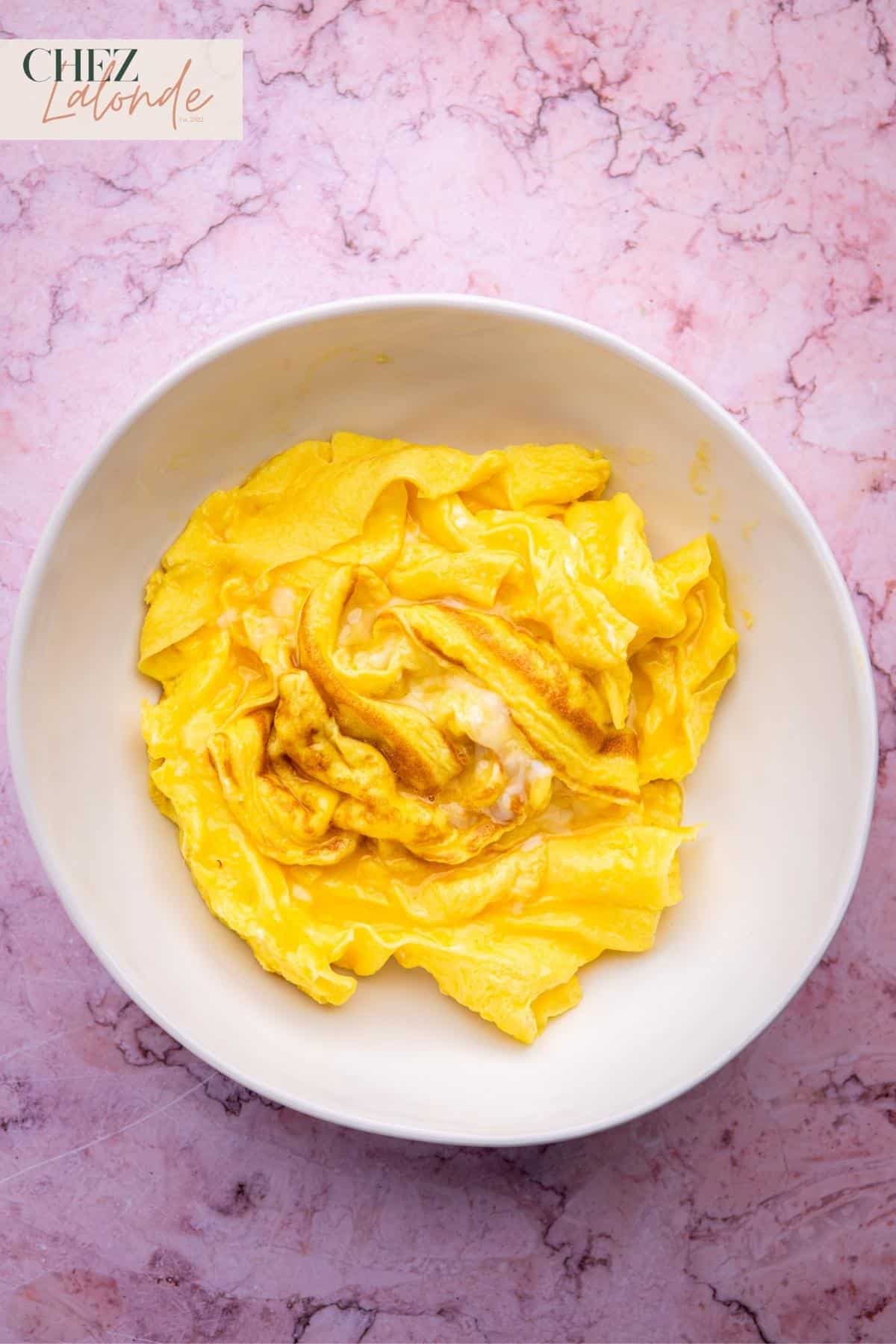
Step Three: Cook the vegetables and Char Siu:
Preheat a wok or large deep skillet over high heat. Once hot, add 2 tablespoons of avocado oil. Toss in diced onion and stir-fry for a minute until golden. Mix in the frozen vegetables and stir-fry for another minute. Finally, introduce the diced Char Siu, stirring everything together for a final minute until well combined. Take the mixture out of the wok and set it aside.


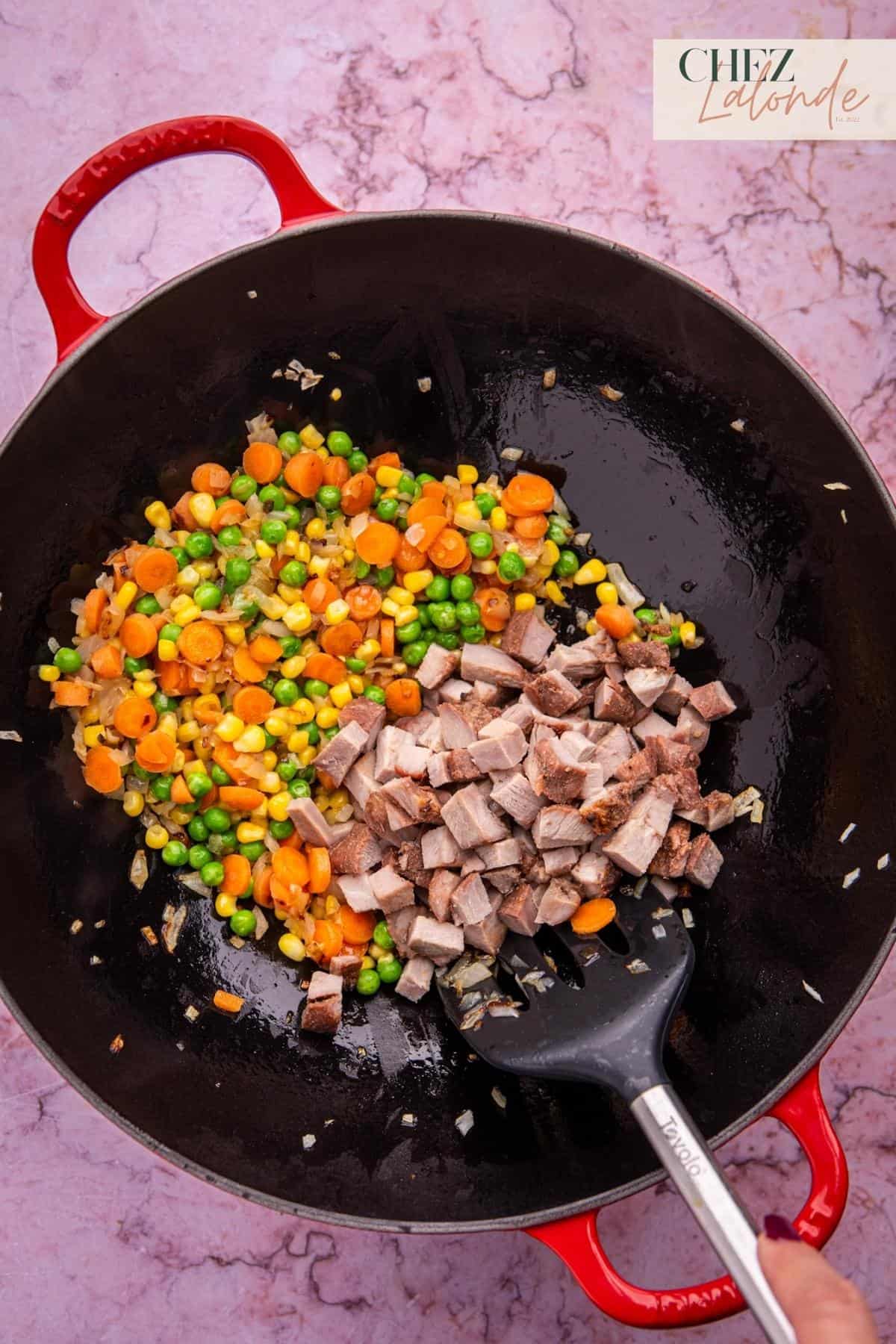
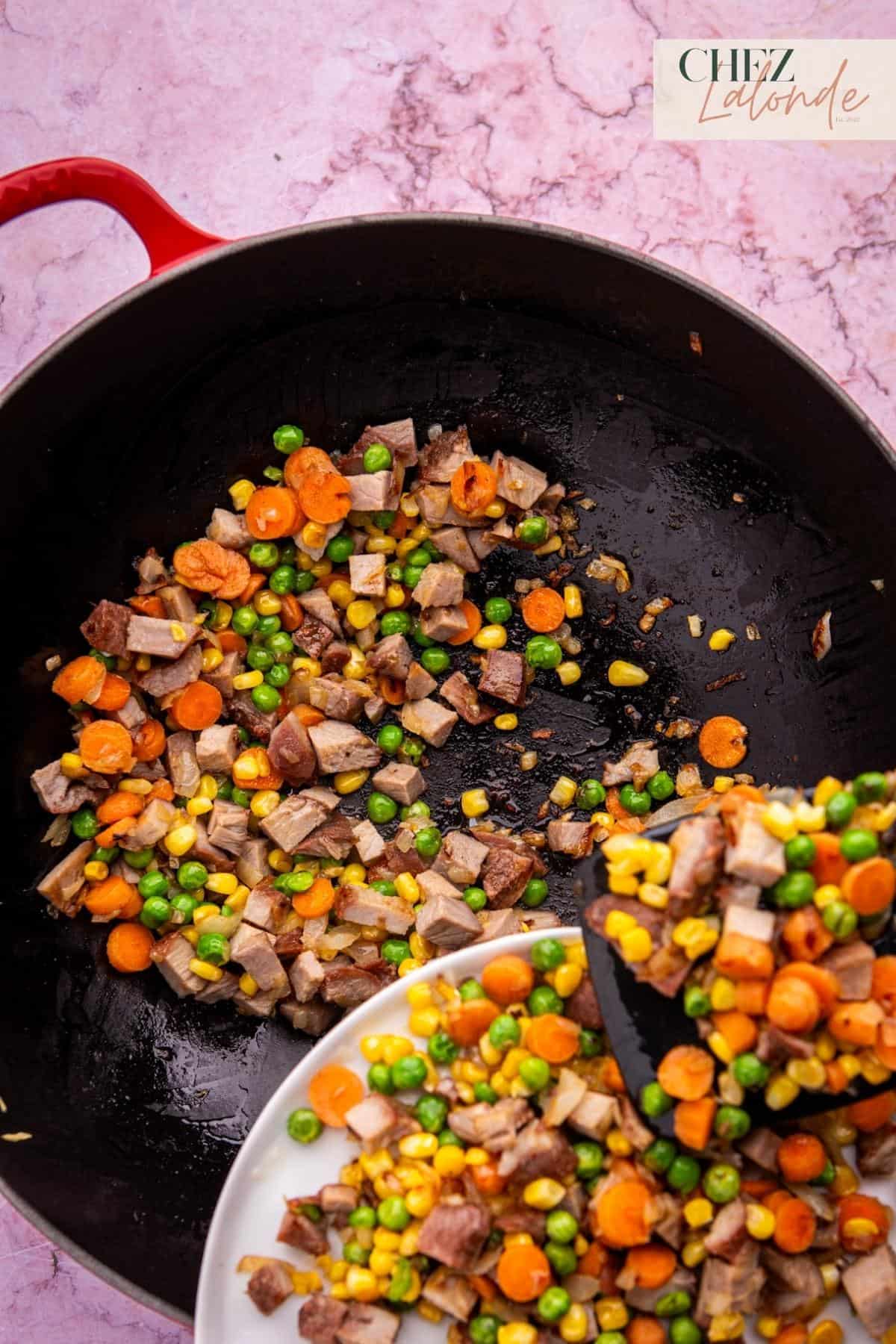
Step Four: Stir-fry the rice:
In the wok, add 4 tablespoons of avocado oil. Sauté chopped green onion and Fresno red pepper for 30 seconds or until fragrant. Mix in the rice, breaking up clumps with a spatula. Cook for about 2 minutes, and keep stirring to prevent sticking.
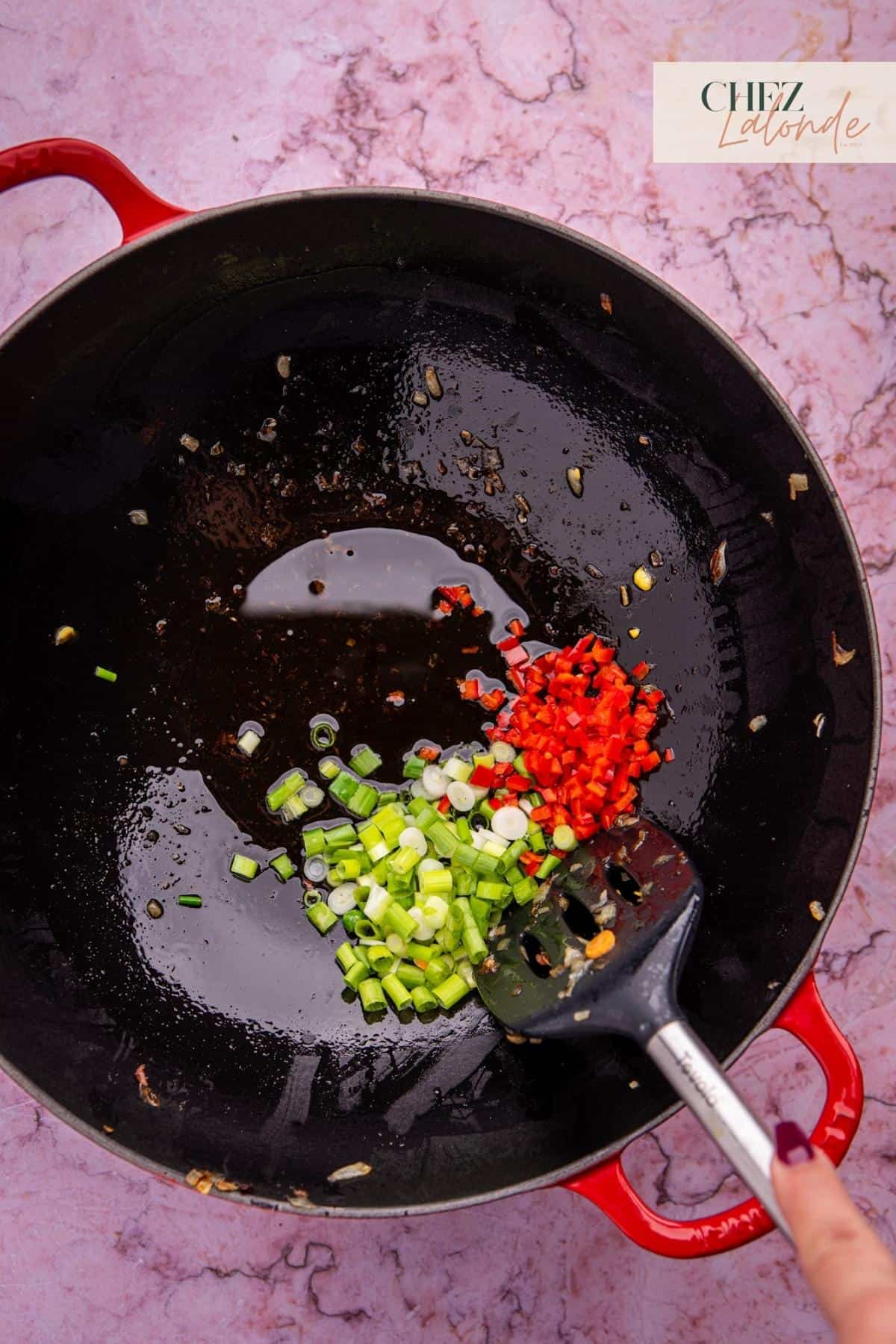
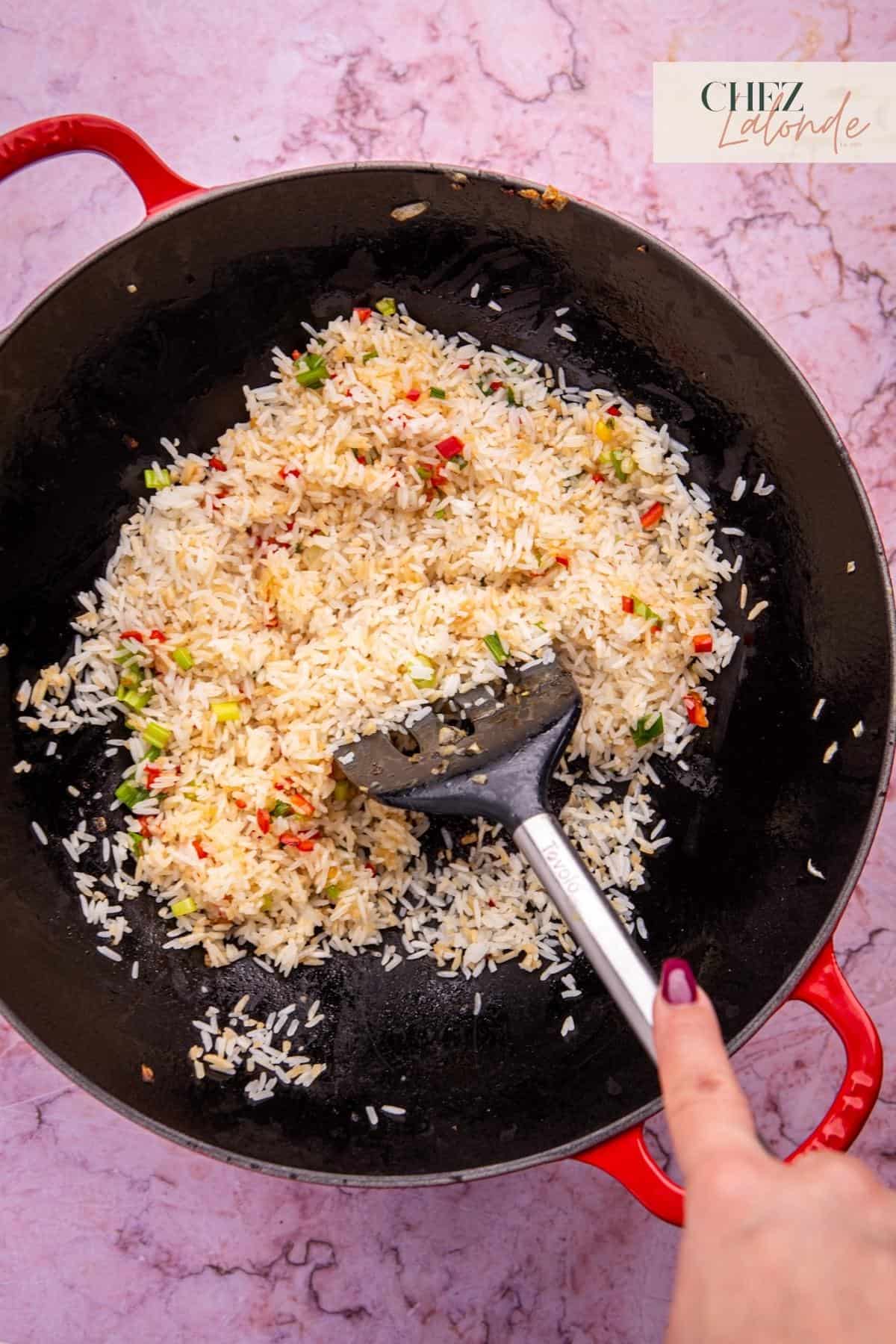
Step Five: Flavor the rice:
As the rice begins to brown slightly, introduce 1 tablespoon of dark soy sauce, 3 tablespoons of regular soy sauce, and 2 tablespoons of sesame oil. Keep stirring to blend the sauces with the rice thoroughly.
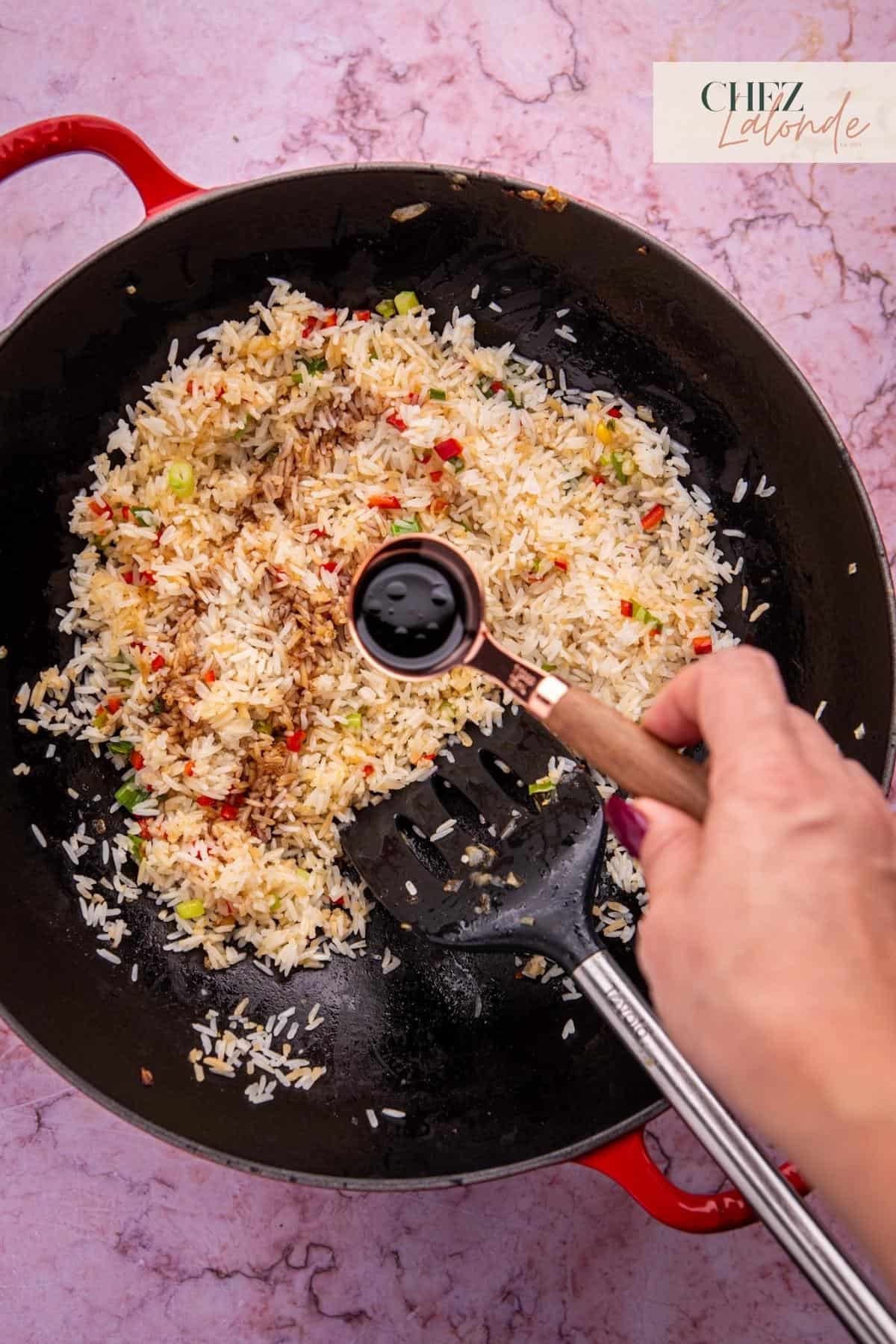
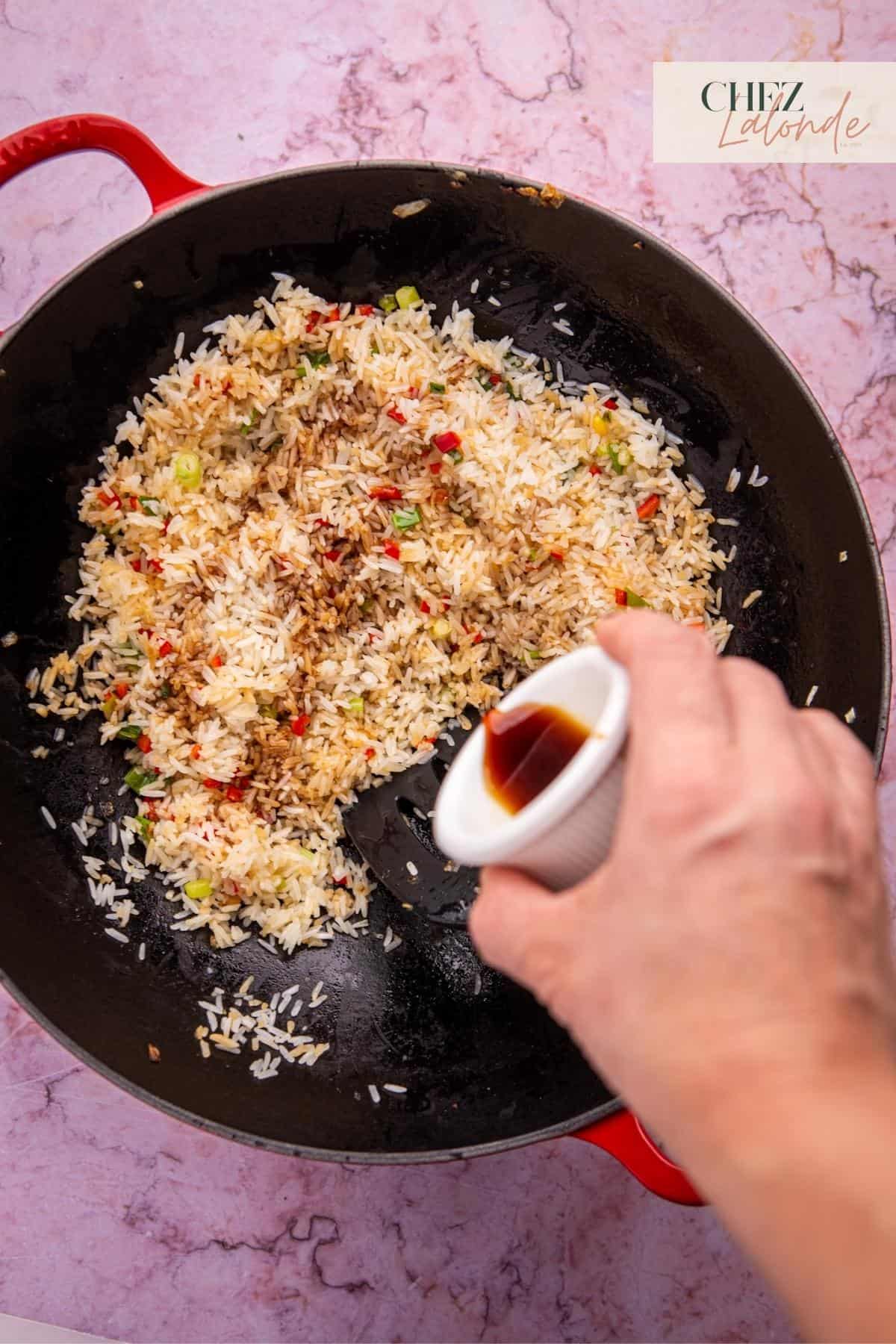
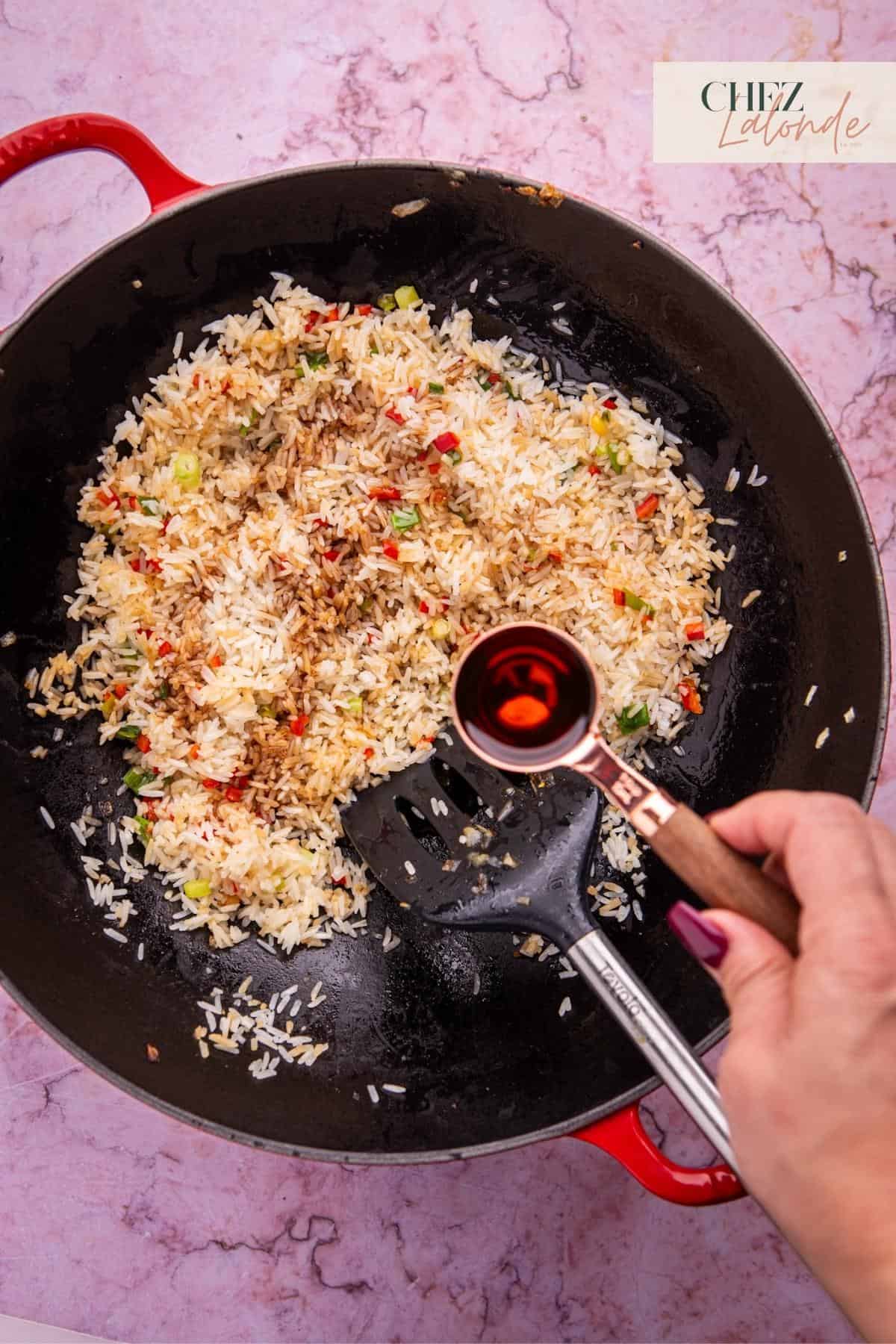

Step Six: Combine Meat, Veggies, and Eggs:
After the rice and sauces meld, reintroduce Char Siu, vegetable blend, and scrambled eggs to the wok. Use your spatula to break apart the eggs and stir-fry the mixture for 1 to 2 more minutes. Once cooked, your Char Siu fried rice is ready to be served.


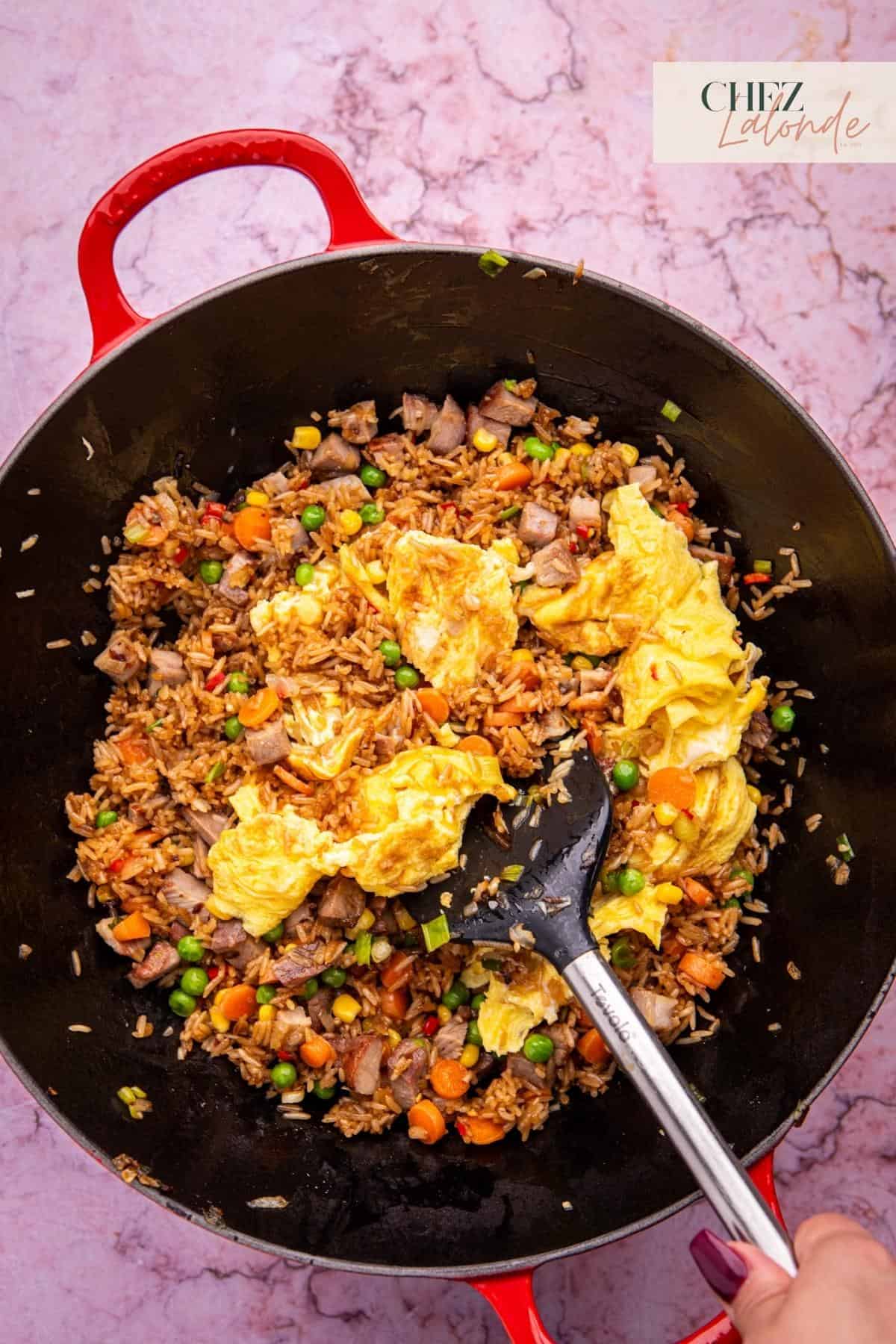
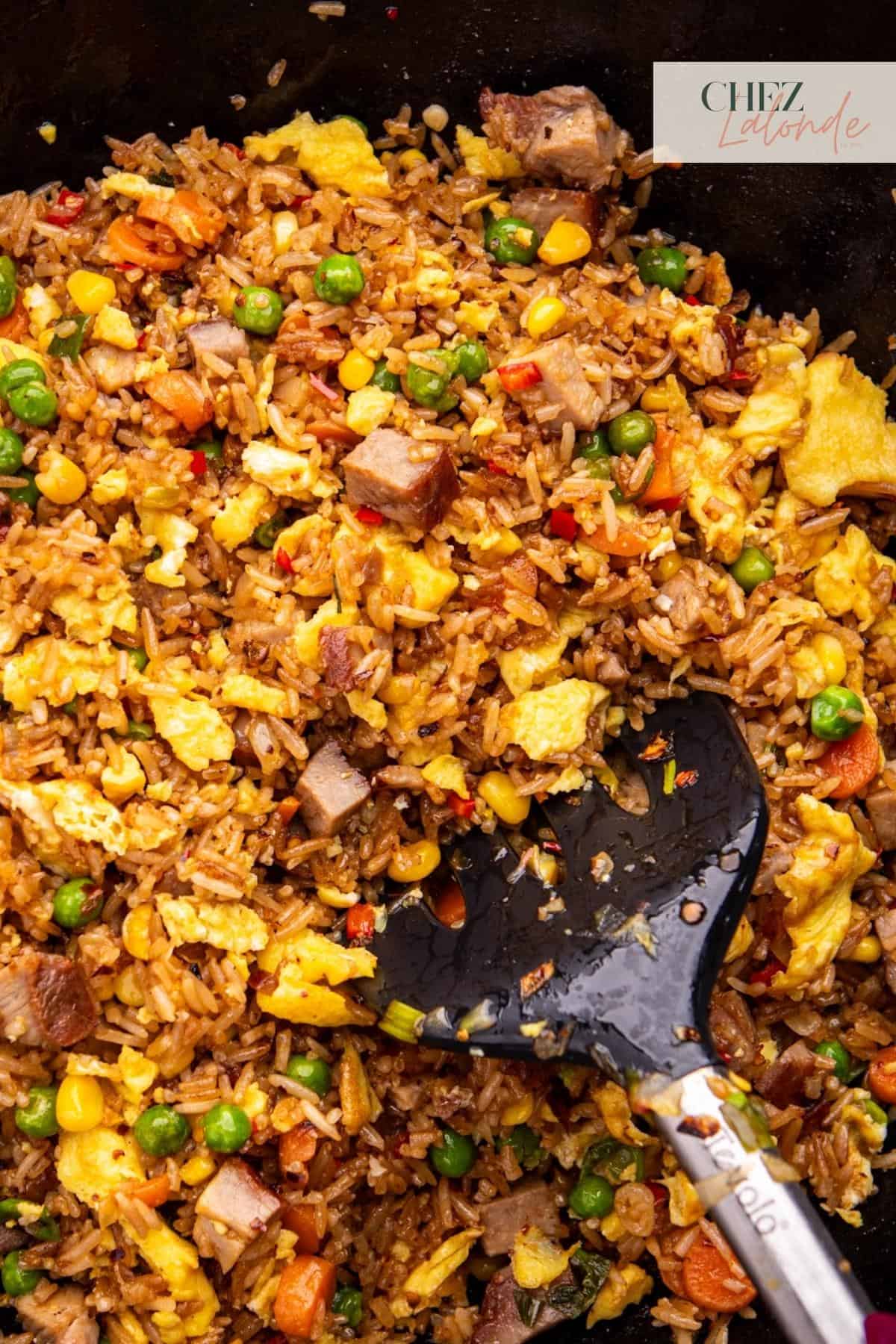
Optional step: Add in Chinese chili oil:
Mix your fried rice in one to two tablespoons of your preferred Chinese chili oil for extra heat and flavor. Stir thoroughly before serving.

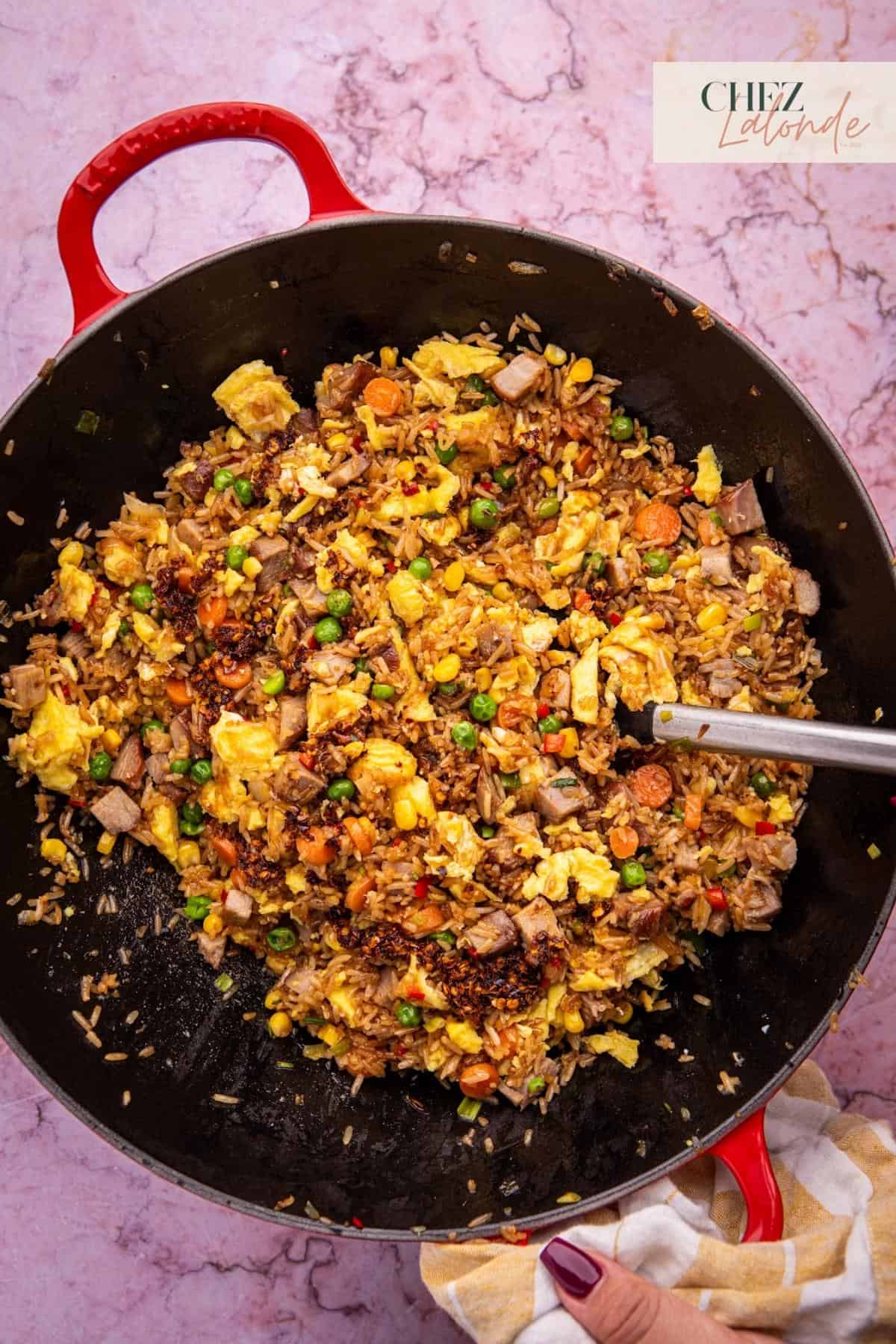
My recommendation:
I highly suggest trying my homemade Chinese chili oil recipe or finding a ready-made option at your nearby Asian markets.
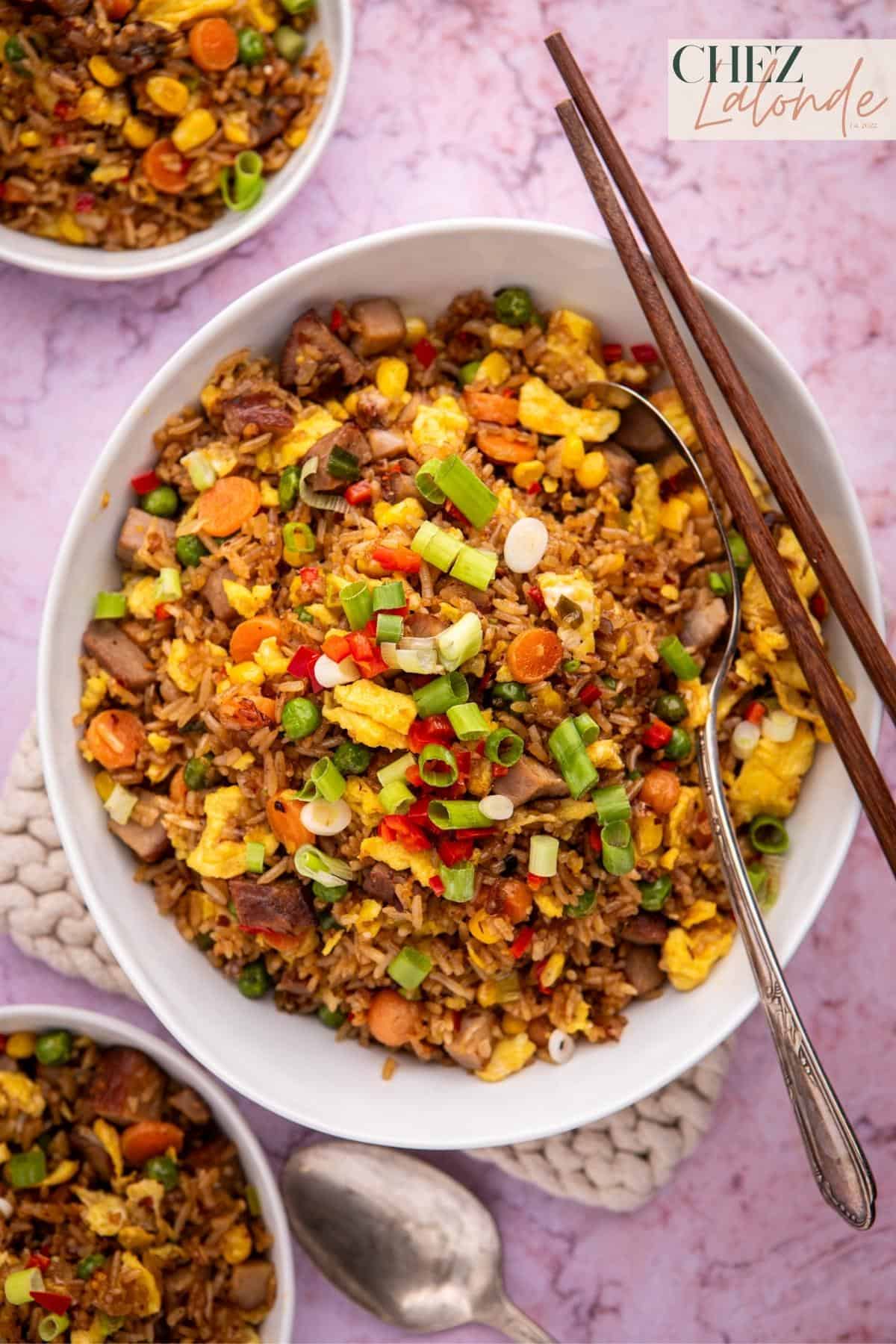
My top tips and tricks for this recipe:
Prep In Advance:
Plan by cooking the Char Siu and rice a day ahead for the best texture and flavors.
Use Overnight Rice:
It’s crucial to have the rice ready a day in advance. Alternatively, if you’re doing it all on the same day, use less water when cooking so the rice isn’t too damp for stir-frying later.
High Heat Cooking:
Stir-fry on high heat to achieve that classic wok hei essence, giving your fried rice an irresistible smoky flavor. Also, high heat can prevent rice from sticking together.
Quick Cooking:
Another nifty tip is to chop up everything and measure your sauces before you kick off the cooking. This recipe comes together quickly; this fried rice recipe is about speediness. Having everything ready and keeping up the speed is the key to success in this recipe.
Season Gradually:
Add soy sauce and seasonings in stages to control the saltiness and flavor balance, preventing over-seasoning.
Easy Customization:
Feel free to experiment with additional proteins, veggies, or sauce variations to tailor the recipe to your taste.
Choose The Appropriate Oil:
Select oil with a high smoke point. Avocado, vegetable, or peanut oil work well for this recipe; avoid using olive oil—reserve premium olive oil for Italian or Mediterranean dishes.
Special Egg Technique:
For perfectly fluffy eggs reminiscent of those at McDonald’s, try this nifty trick: incorporate a tablespoon of milk into your beaten eggs. Opt for low heat while cooking to prevent overcooking, resulting in wonderfully silky and fluffy scrambled eggs.
***A big shoutout to my husband for sharing this fantastic egg-cooking tip with my readers!***
What dishes are best to serve with rice dish?
Try out these below recipes to complete your meal!

Reheating and leftover storage tips
Refrigeration:
Keep your remaining Chinese BBQ pork fried rice fresh by storing it in an airtight container. For optimal quality, refrigerate it for a maximum of 3 days. Beyond that, the rice tends to become overly greasy.
Reheating:
Pop your leftovers into the microwave and reheat for about 2 minutes.
Freezing:
Freezing your fried rice isn’t the best idea, as it might develop a freezer-burned taste over time. This recipe is perfectly portioned for a small family of four, or even for two, with an extra meal for the next day. It’s an ideal choice for packing lunch to enjoy at work or school.

FAQs about this fried rice recipe:
Final Thoughts:
As we wrap up this delightful adventure through the realm of “Better than Takeout Chinese BBQ Char Siu Fried Rice,” I hope that this recipe, along with its array of tips and ideas, has equipped you to confidently wield the wok and create a restaurant-grade dish right in your kitchen. Are you prepared to turn your leftover odds and ends into a tantalizing family feast? I’m eager to hear about your culinary journey – drop a comment below and share your experiences.
Let’s keep the conversation sizzling! Have fun cooking!

Do you like this recipe?
Your support fuels my passion for sharing the joy of cooking, so let’s keep the conversation going. Follow me on Instagram @ChezLalonde, and visit my blog for a treasure trove of delectable recipes and kitchen inspiration. Let’s create, connect, and savor together!

Better Than Takeout Chinese BBQ Char Siu Fried Rice
- Total Time: 24 hours 20 minutes
- Yield: 6 servings 1x
Description
Indulge in the culinary journey of making “Better than Takeout Chinese BBQ Char Siu Fried Rice” that surpasses restaurant quality. With expert guidance and creative tips, transform leftover ingredients into a flavorful masterpiece. Discover the secrets to achieving fluffy eggs, the perfect wok hei, and the ultimate balance of flavors.
Ingredients
16 oz Leftover cooked white rice
8 oz Char Siu (Can be homemade or store-bought)
5 Large size eggs
1/2 Cup of Frozen peas
1/2 Cup of Frozen Corn
1/2 Cup of Frozen or fresh diced carrots
3 oz of Mid-size yellow onion
1 oz of Green onions
1 Tablespoon of Dark soy sauce
3 Tablespoons of Regular soy sauce
2 Tablespoons of Sesame oil
6 Tablespoons of Avocado or Vegetable oil (Separate: 2 tablespoons for stir-frying vegetables and meat, and 4 tablespoons for stir-frying rice)
1/2 Teaspoon of Sea Salt
1 Tablespoon of Whole milk
2 Tablespoons of Chinese chili oil (Optional)
0.8 Oz or 1 fresh diced Fresno Chili pepper
Instructions
Step One: Prepare your ingredients and sauces:
Prep the rice a day early if you can. For same-day cooking, use less water to avoid soggy rice. Also, chop ingredients and measure sauces beforehand. Speed matters—this recipe is all about quickness and readiness.
Step two: Prepare and scramble the eggs:
Crack five eggs into a small bowl, then add 1 tablespoon of milk and ½ teaspoon sea salt. Whisk the mixture. Heat a small frying pan over medium-low heat, and when warm, lightly spray with cooking oil. Scramble the eggs until they’re cooked. Once done, take them out of the pan and set aside.
Step Three: Cook the vegetables and Char Siu:
Preheat a wok or large frying pan over high heat. Once hot, add 2 tablespoons of avocado oil. Toss in diced onion and stir-fry for a minute until golden. Mix in the frozen vegetables and stir-fry for another minute. Finally, introduce the diced Char Siu, stirring everything together for a final minute until well combined. Take the mixture out of the wok and set it aside.
Step Four: Stir-fry the rice:
In the wok, add 4 tablespoons of avocado oil. Sauté chopped green onion and Fresno red pepper for 30 seconds or until fragrant. Mix in the rice, breaking up clumps with a spatula. Cook for about 2 minutes, and keep stirring to prevent sticking.
Step Five: Flavor the rice:
As the rice begins to brown slightly, introduce 1 tablespoon of dark soy sauce, 3 tablespoons of regular soy sauce, and 2 tablespoons of sesame oil. Keep stirring to blend the sauces with the rice thoroughly.
Step Six: Combine Meat, Veggies, and Eggs:
After the rice and sauces meld, reintroduce Char Siu, vegetable blend, and scrambled eggs to the wok. Use your spatula to break apart the eggs and stir-fry the mixture for 1 to 2 more minutes. Once cooked, your Char Siu fried rice is ready to be served.
Notes
Prep in Advance: Plan by cooking the Char Siu and rice a day ahead for the best texture and flavors.
Day-Old Rice: Use day-old rice or refrigerate freshly cooked rice for a few hours to ensure individual grains and avoid clumping.
High Heat Cooking: Stir-fry on high heat to achieve that classic wok hei essence, giving your fried rice an irresistible smoky flavor. Also, high heat can prevent the rice from sticking together.
Quick Cooking: Have all your ingredients prepped and ready before cooking, as fried rice comes together quickly.
Season Gradually: Add soy sauce and seasonings in stages to control the saltiness and flavor balance, preventing over-seasoning.
Easy customization: Feel free to experiment with additional proteins, veggies, or sauce variations to tailor the recipe to your taste.
Special egg technique: For perfectly fluffy eggs reminiscent of those at McDonald’s, try this nifty trick: incorporate a tablespoon of milk into your beaten egg mixture. Opt for low heat while cooking to prevent overcooking, resulting in wonderfully silky and fluffy scrambled eggs.
Spice it up: Consider mixing in one to two tablespoons of your preferred Chinese chili oil for extra heat and flavor to your fried rice. Stir thoroughly before serving.
- Prep Time: 1440 minutes
- Cook Time: 20 minutes
- Category: Entree
- Method: Stir-fry
- Cuisine: Chinese
Keywords: Stir-fried, fried rice, Chinese BBQ Pork, Sous Vide, Char Siu, Cantonese cuisine, wok, better than takeout, Char Siu Fried Rice.

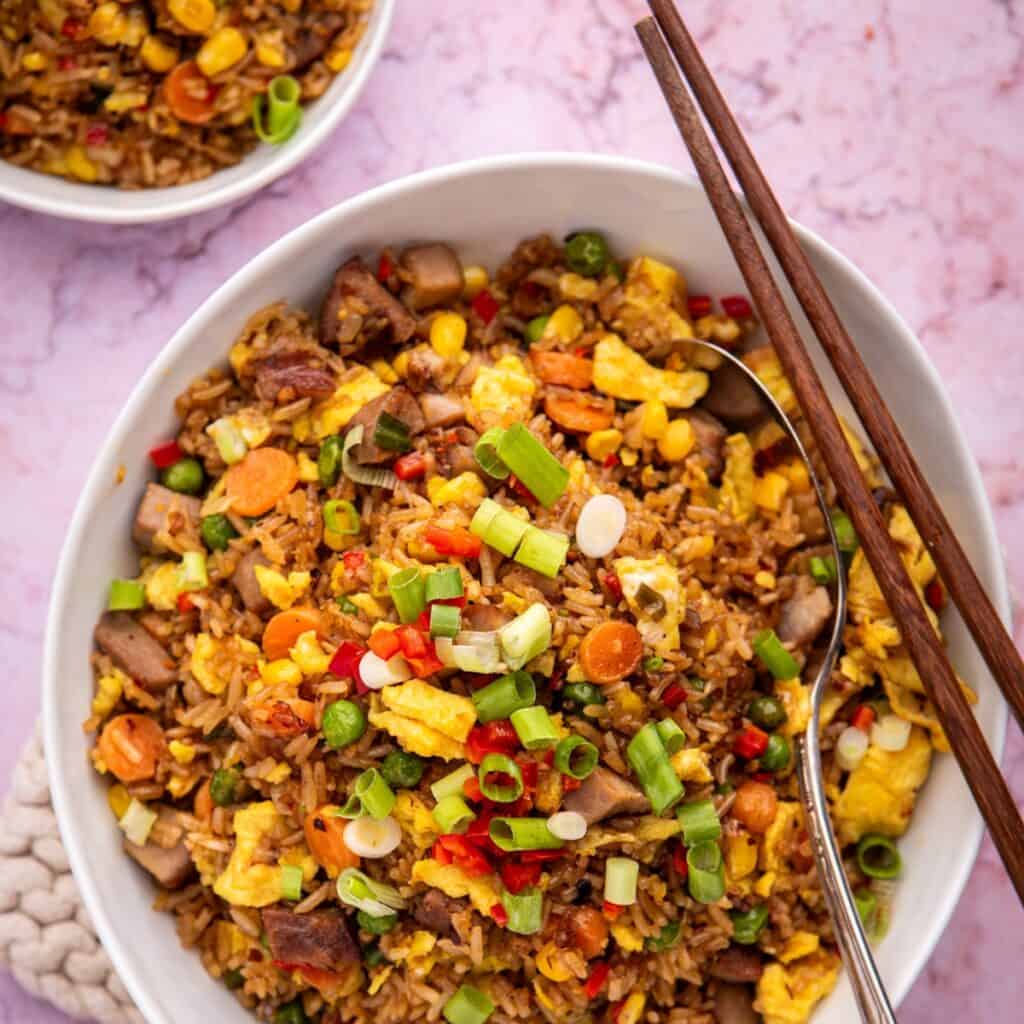
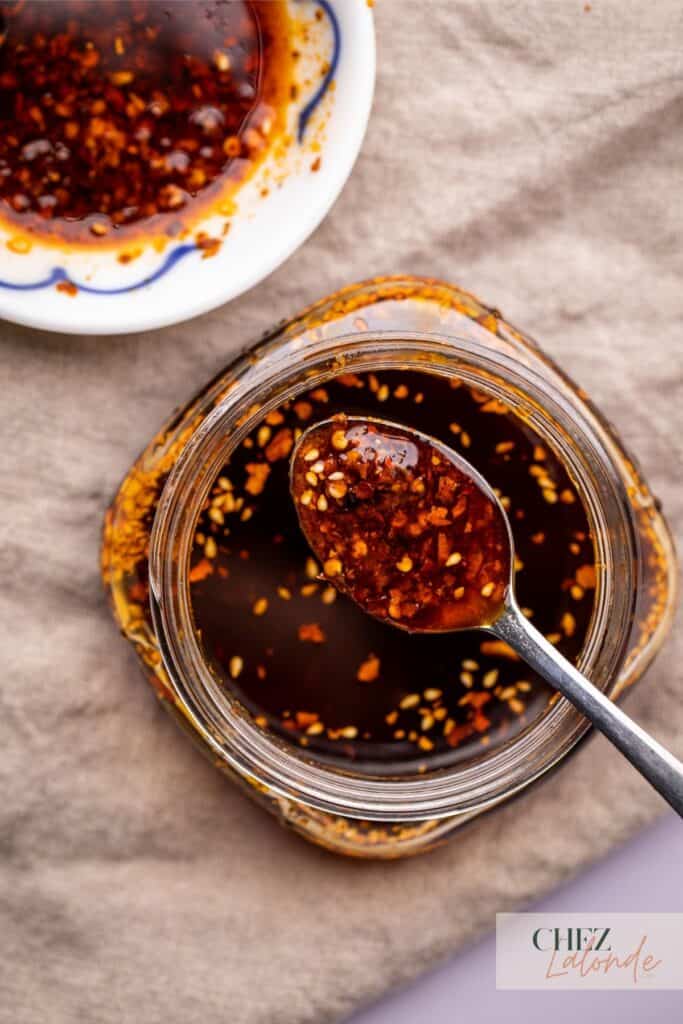

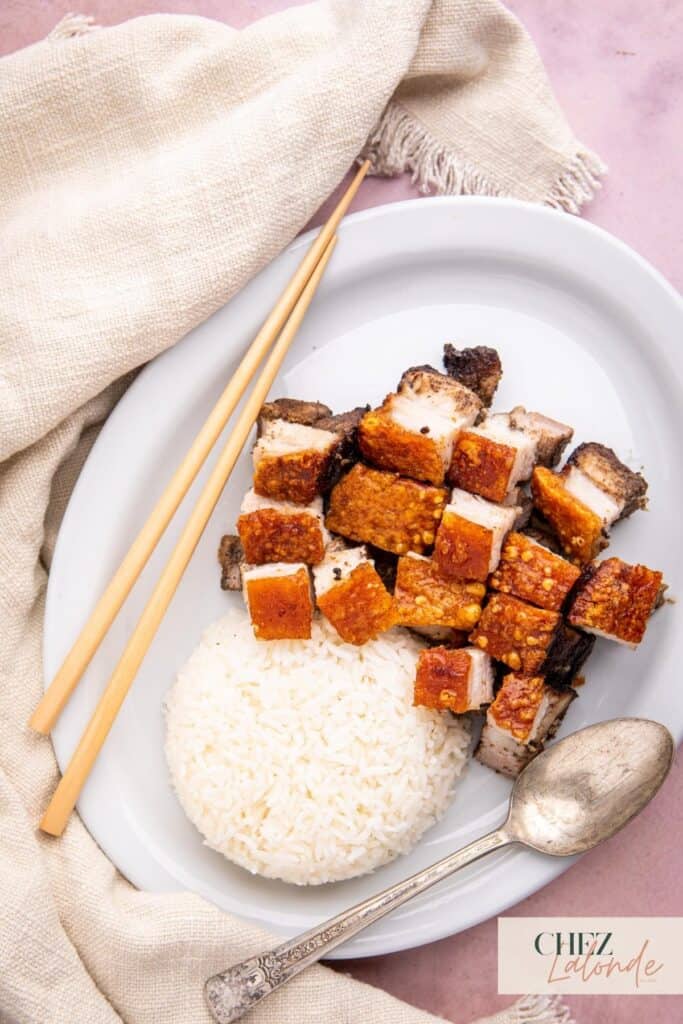

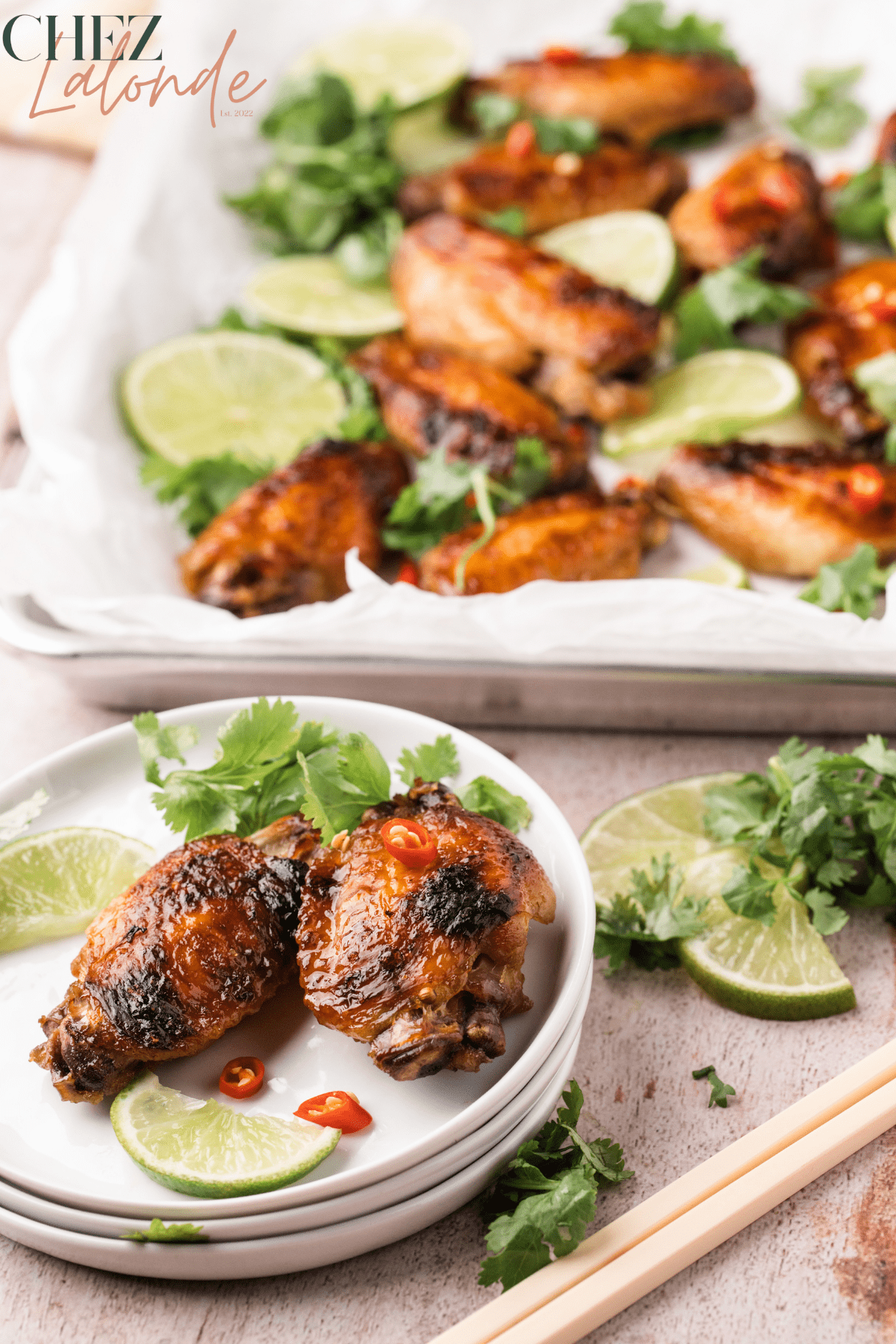
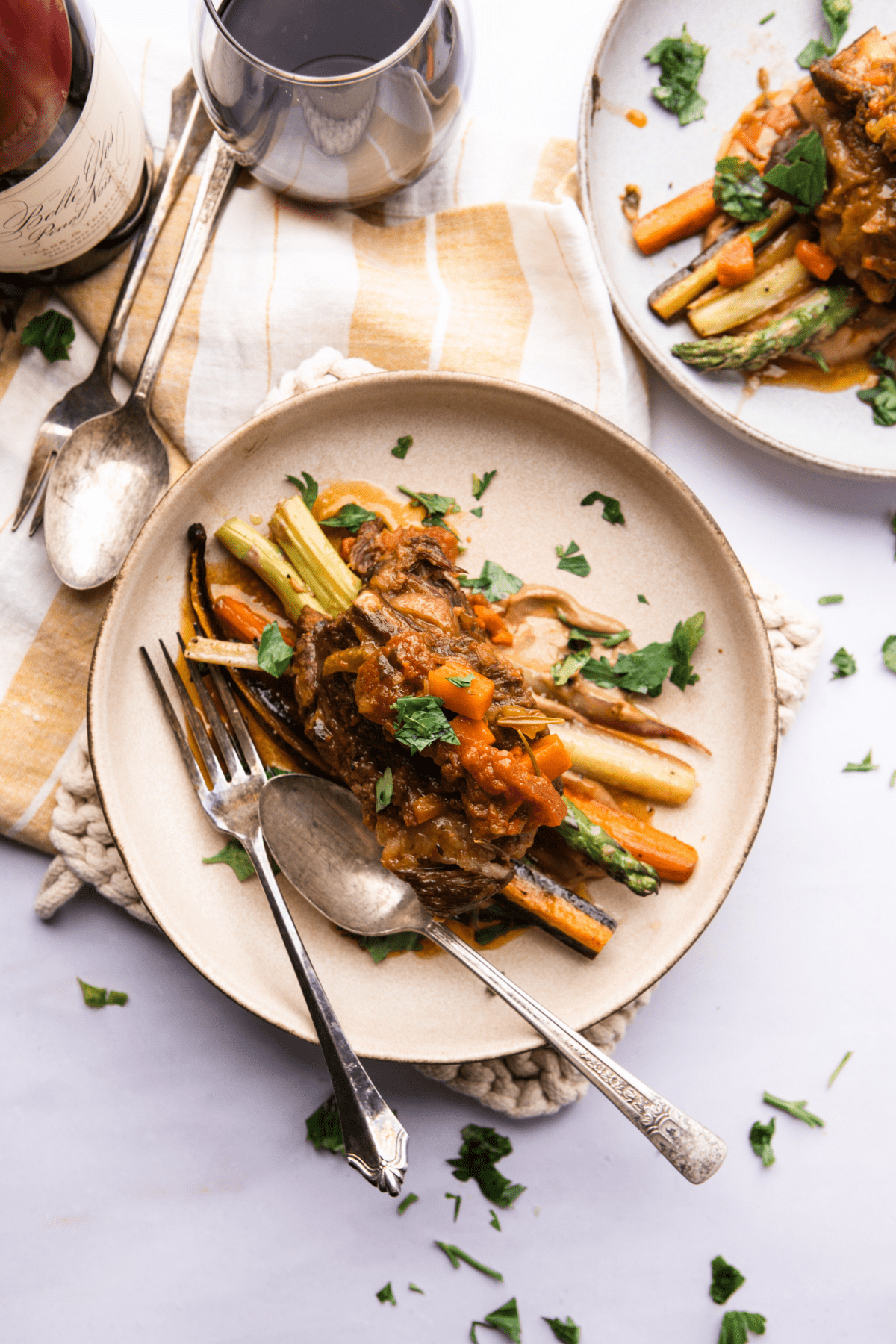
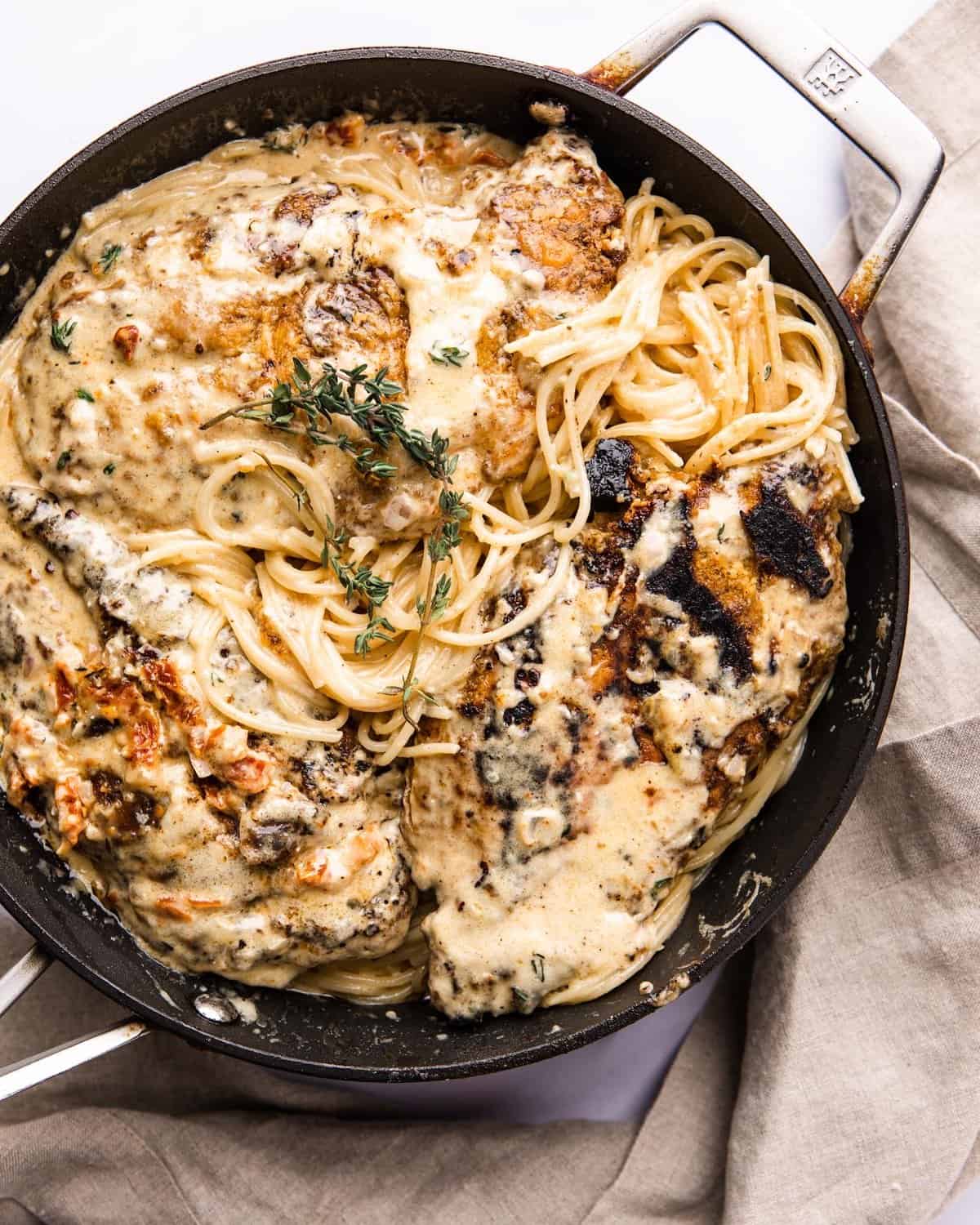
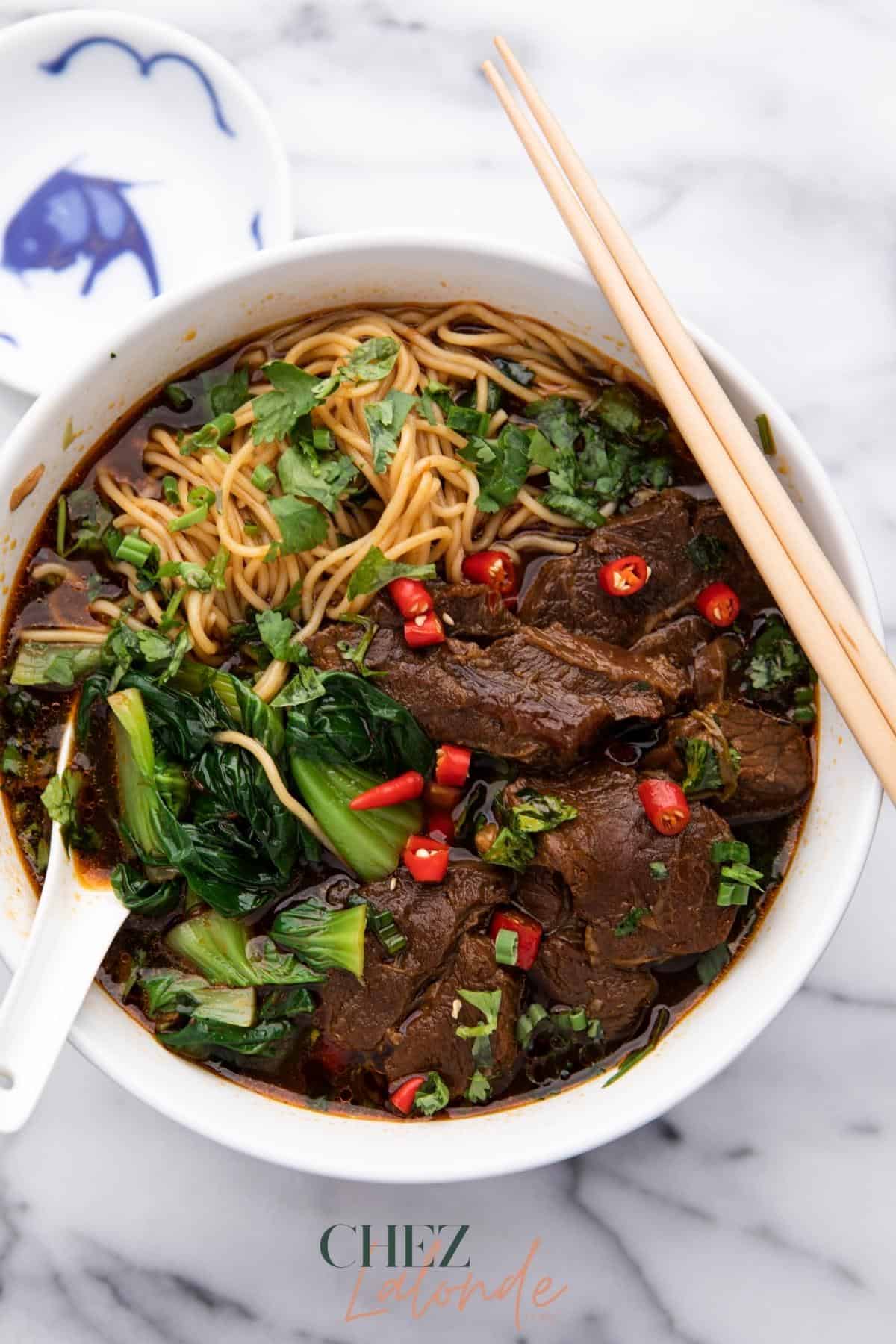
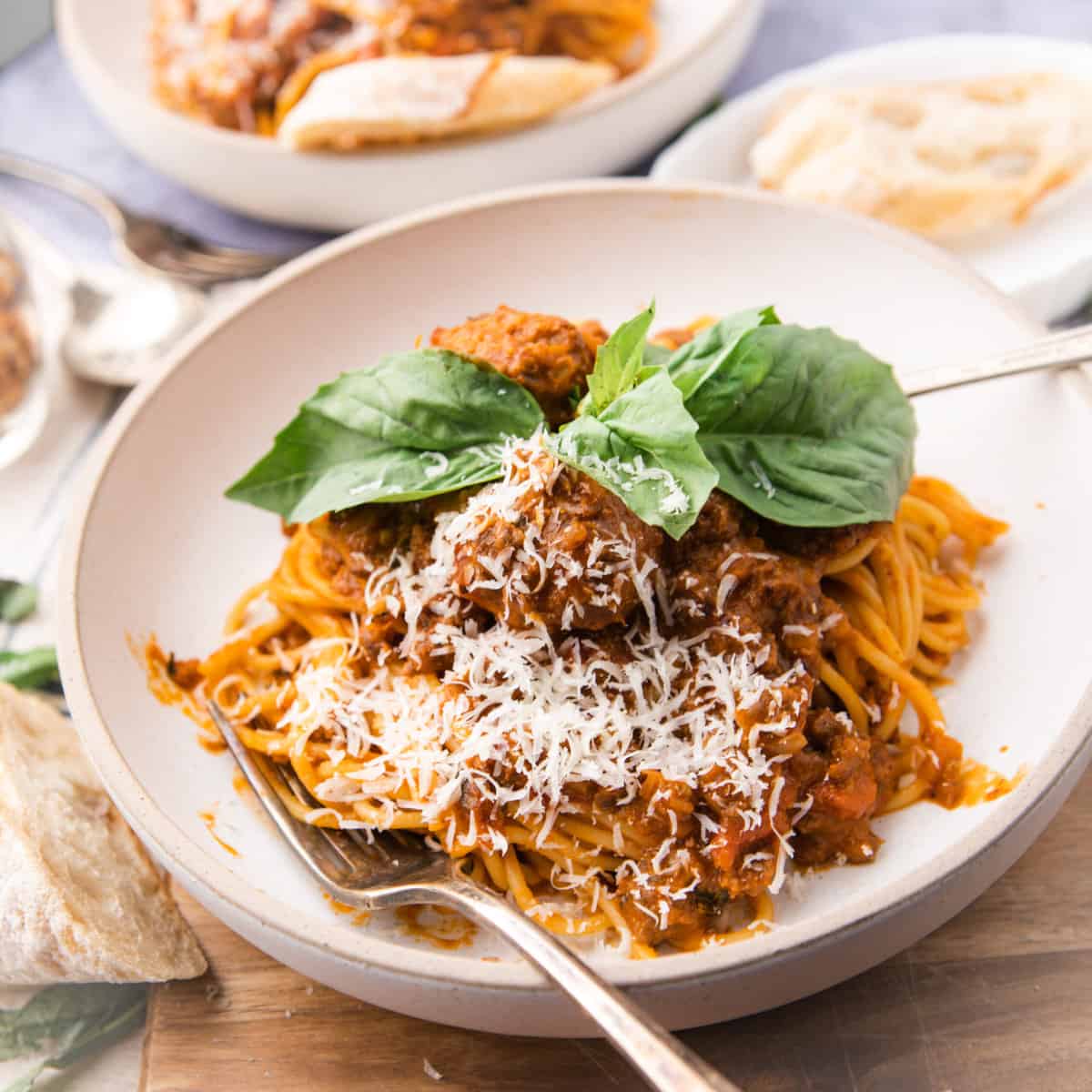





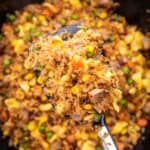



This sounds amazing! I love Char Siu, it has such a wonderful flavor. Thanks for the great recipe!
Thank you so much for sharing your Shrimp Lo Mein on my blog post! You are amazing!